Newborn baby essentials checklist: The products you actually need
Expecting a baby is incredibly exciting, but there are lots of things to organise too.
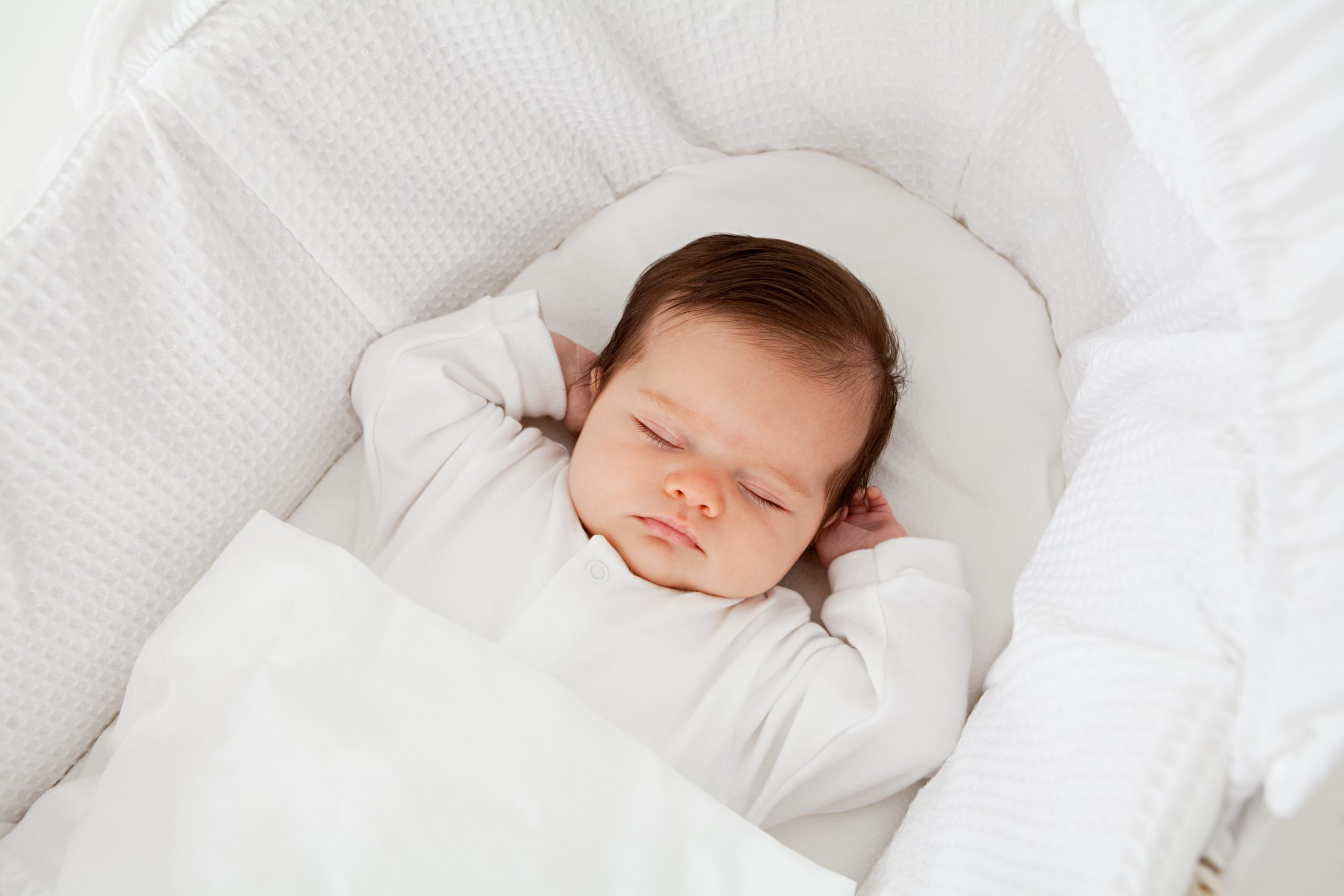

Expecting a baby is incredibly exciting, but there are lots of things to organise too. Take the stress out of shopping with our checklist of newborn baby essentails.
From pushchairs and Moses baskets to the best baby monitors and clothing, if you’re bewildered by all the baby paraphernalia out there, relax… You don’t need it all. There are, however, some key items you’ll want to stock up on and consider buying.
In the weeks running up to a due date, expectant parents are usually dashing around trying to get everything ordered and sorted for their new arrival. To help you along with the process, we've rounded up some of the essential baby products you'll need to be armed with. We are not talking about all the fancy extras, just the key items you'll need for day-to-day life with a baby.
So there's no need to spend hours researching online, we've rounded up the things you will need to save you time and to take the stress out of shopping. Read on for our advice on how to choose these newborn baby essentials.
Newborn baby essentials - your checklist at a glance
- Pram
- Cot
- Baby mattress and bedding
- Baby monitor
- Breast pump
- Nursing pillows
- Moses basket
- Carrier or sling
- Feeding bottles and sterilisers
- Changing bag
- Newborn nappies
- Newborn clothes
- Car seat
- Baby bath
- Changing mat or changing table
- Muslin cloths
Optional extras - Baby bouncer - Travel cot - Baby thermometer - Baby gym
Pram
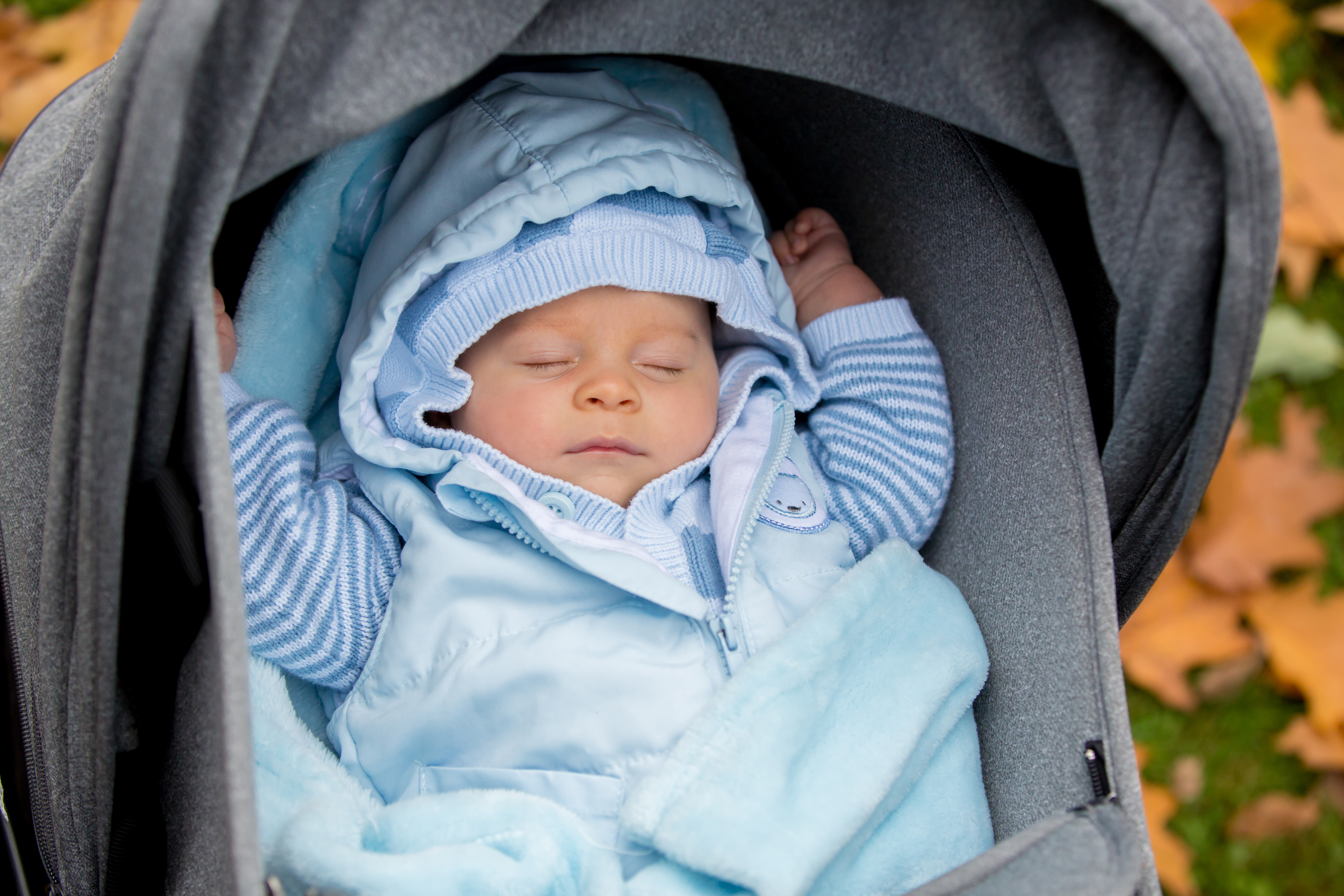
A pram, buggy or pushchair is likely to be one of your most pricey buys and there are lots of factors to consider before buying. Until the age of six months, babies need to lie flat in a pram or pushchair. This is important for the healthy development of the spine and hips. Lying flat also helps keep a baby’s airways open, reducing the risk of suffocation.
A travel system is a popular choice with many new parents because it comes with a carrycot so your baby can lie flat. Once it’s outgrown, you can store the carrycot and move your baby into the pushchair seat. Travel systems also come with a detachable infant carrier car seat, which makes it easy to move your baby between the pushchair and the car without unbuckling your little one from the car seat. However, note that babies should not sit in car seats for long periods of time – never use them for sleeping outside of the car.
The downside of a travel system is that they tend to be pretty heavy. The car seat they come with can’t be used once your baby is around a year old. After investing in a travel system for a newborn, lots of parents end up buying a lighter, more compact stroller once their baby is a toddler and has outgrown the infant car seat.
Think ahead to how practical your choice of pram will be in a year’s time. It’s hard to believe, but those first 12 months will fly by and you won’t want to be left with a monster of a pram that’s impractical for life with a growing tot. Think, too, about where you live and what sort of terrain you’ll be pushing your pram over. If you’re a city slicker who’s always meeting friends for coffee or nipping to the shops, you’ll want something highly manoeuvrable and designed to glide over shiny shop floors and uneven pavements. On the other hand, if you live in the countryside and spend lots of time exploring the great outdoors, you’ll need a pushchair with robust, all-terrain wheels that can cope with muddy paths and rural walks.
Mastering the art of opening and folding your pushchair (or attaching the carrycot or car seat to the chassis) is a vital skill – so check reviews to see how other parents have got on with those features. Joining Amazon Baby Wish List is a good idea, too, because you can easily see what other parents think of an item you are considering buying. And don't forget the rain cover – we’re in the UK, after all.
Car seat

Buying a car seat for a baby or child is a real minefield so it’s important to take the time to understand the different types of car seat that are available. By law, all babies, toddlers and children must travel in a suitable child restraint.
Car seats are divided into different categories, known as groups, according to their maximum weight and / or height limits. Working out which seat your baby needs and which will suit your lifestyle best therefore depends on your child’s height and weight – not their age.
The first car seat you need for a newborn will either be a Group 0, Group 0+ or iSize seat. These are shaped like a bucket to keep your baby lying in a reclined position that supports spine and lung development. They also have a handle which can be used for carrying the seat but is actually designed to act as a roll bar in the event of an impact.
Our recommendation is to go for an iSize seat. These seats are rearward facing, which offers more protection in a collision than a forward-facing seat, and are suitable from the day your baby is born until she is at least 15 months old. i-Size seats meet or exceed the very latest car seat safety regulations.
Other types of seat can be used from birth until your baby is four or six years old, but they’re designed to be left in situ in the car rather than carried outside of the car or attached to a pushchair. They’re called combination seats and can be used rearward-facing initially and later moved into a forward-facing position. It can be tempting to choose one of these because they seem to represent good value for money given how long they can be used for. However it’s safest to keep your baby in a rearward-facing car seat for as long as possible – some seats even allow this up to age four.
Some travel systems also include an infant car seat, but you’ll definitely need one straight away if you’re planning to bring your baby home from hospital in a car or taxi. Whichever you choose, it must be suitable for your child’s weight (rather than age), be rear-facing (which offers better protection in a collision) and must meet safety standards ECE R44.03.
If you'd like to find out more about car seat safety rules and regulations, read our car seat safety guide.
Cots
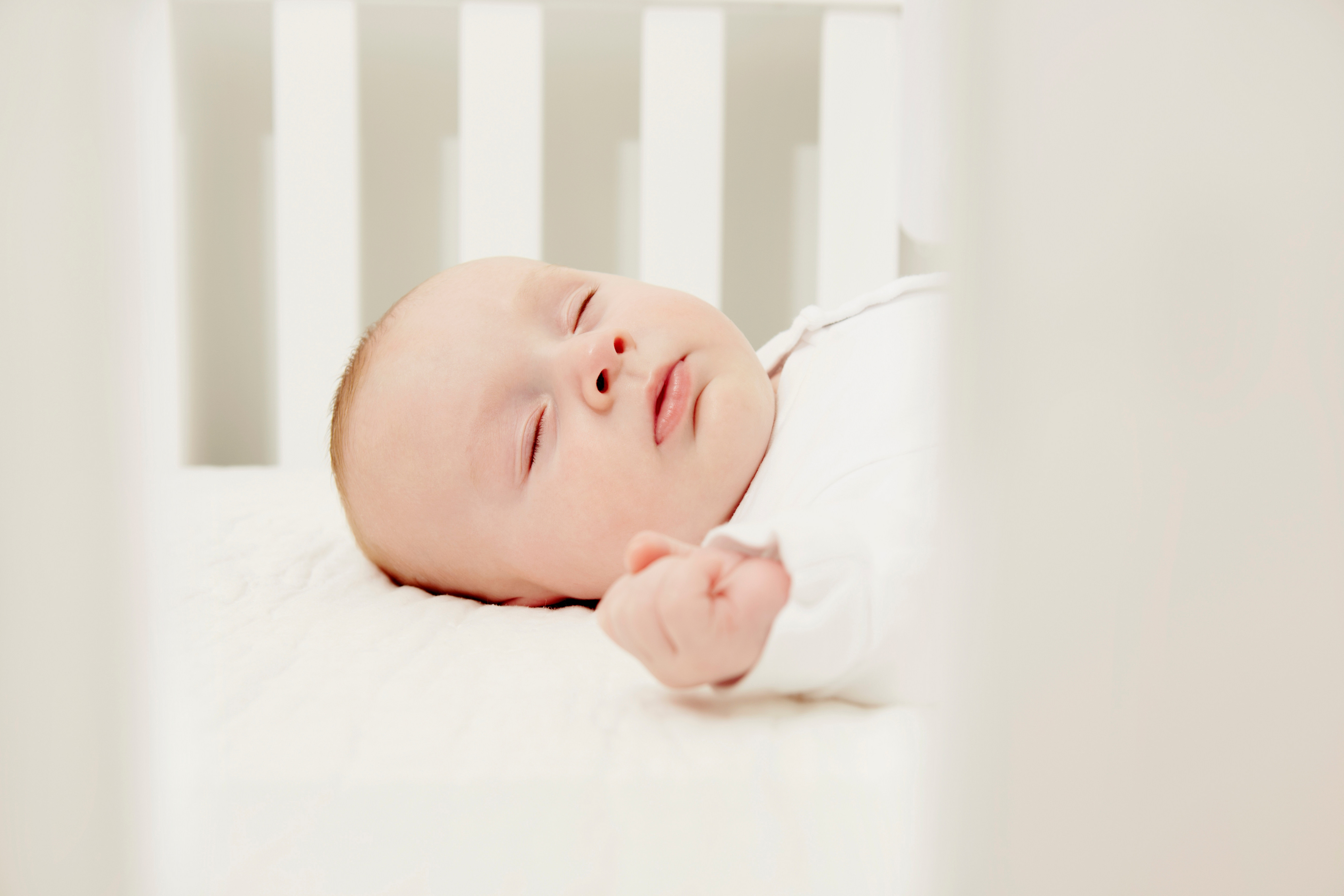
A cot should last at least two years, and many can convert to a toddler bed when your baby is ready to move on from a cot. Make sure the mattress fits well, and always settle your baby with his or her feet at the foot of the cot, so he or she can’t wriggle under the blankets.
For the first six months, your baby should sleep in the same room as you, in a separate sleeping space such as a cot, Moses basket or bedside crib. Cots come in many shapes, sizes and designs. Make sure you measure the space where you plan to keep your cot correctly before you buy. If you don’t have a lot of space in your room for a cot, consider buying a Moses basket or a bedside crib instead. These are considerably smaller than cots and can be placed immediately beside your bed for easy feeding during the night.
Baby mattress and bedding
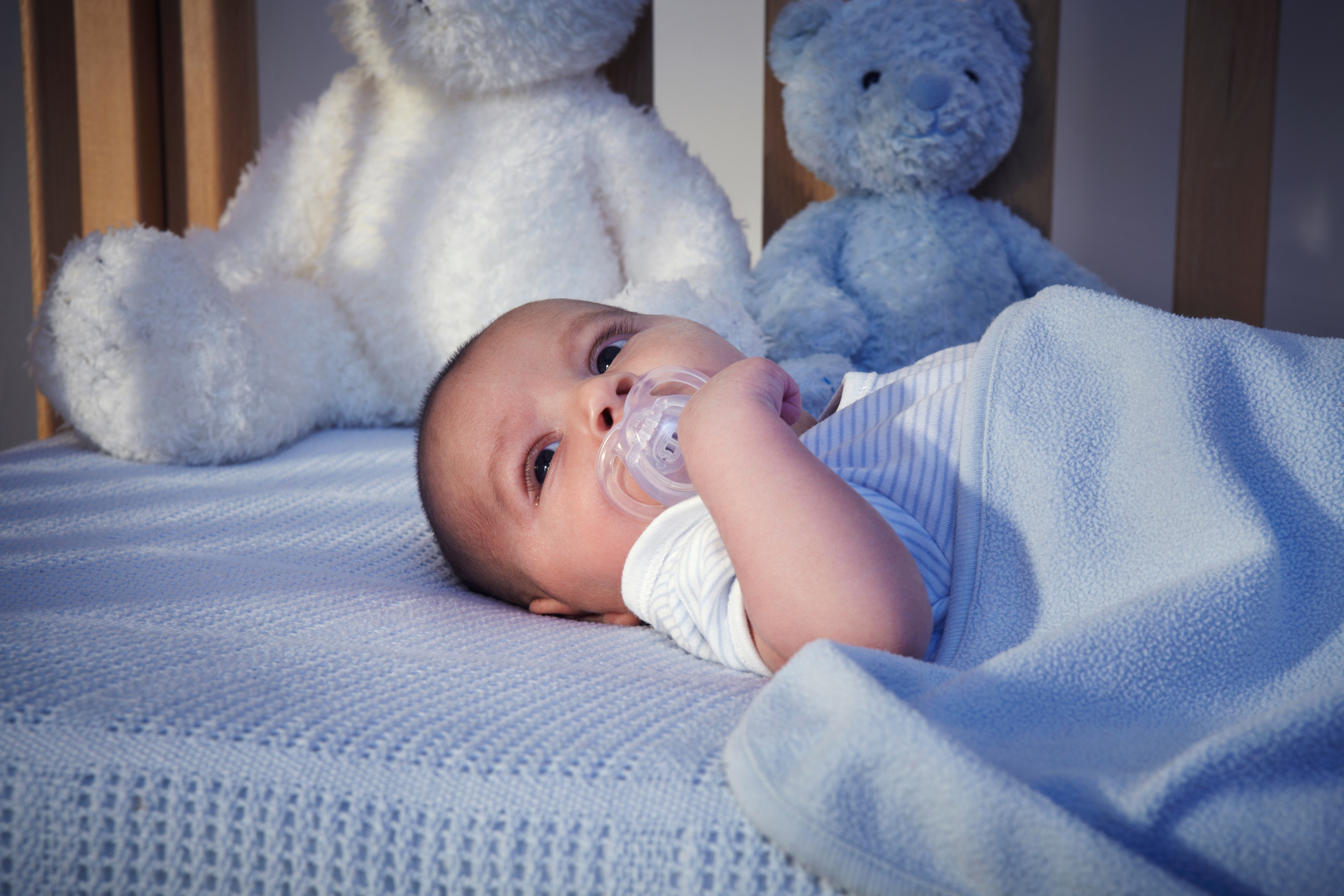
There are some rules to follow when it comes to buying a mattress for your little one. It needs to be the right size and fit into your chosen cot or crib well with no more than a 4cm gap between the mattress and cot. It needs to be at least 10cm thick too and needs to be firm so it doesn’t sag or mould to your baby’s shape.
All mattresses should conform to the BSS (British Safety Standards) and be marked somewhere with this number: BS 1877-10:1997.
When it comes to cot bedding, keep in mind that you need to buy the right size bedding for the cot mattress. For babies under a year old, it’s best to use a fitted flat sheet and a cellular blanket or a specially designed baby sleeping bag instead of blankets – don’t use duvets, quilts or pillows.
Baby monitor
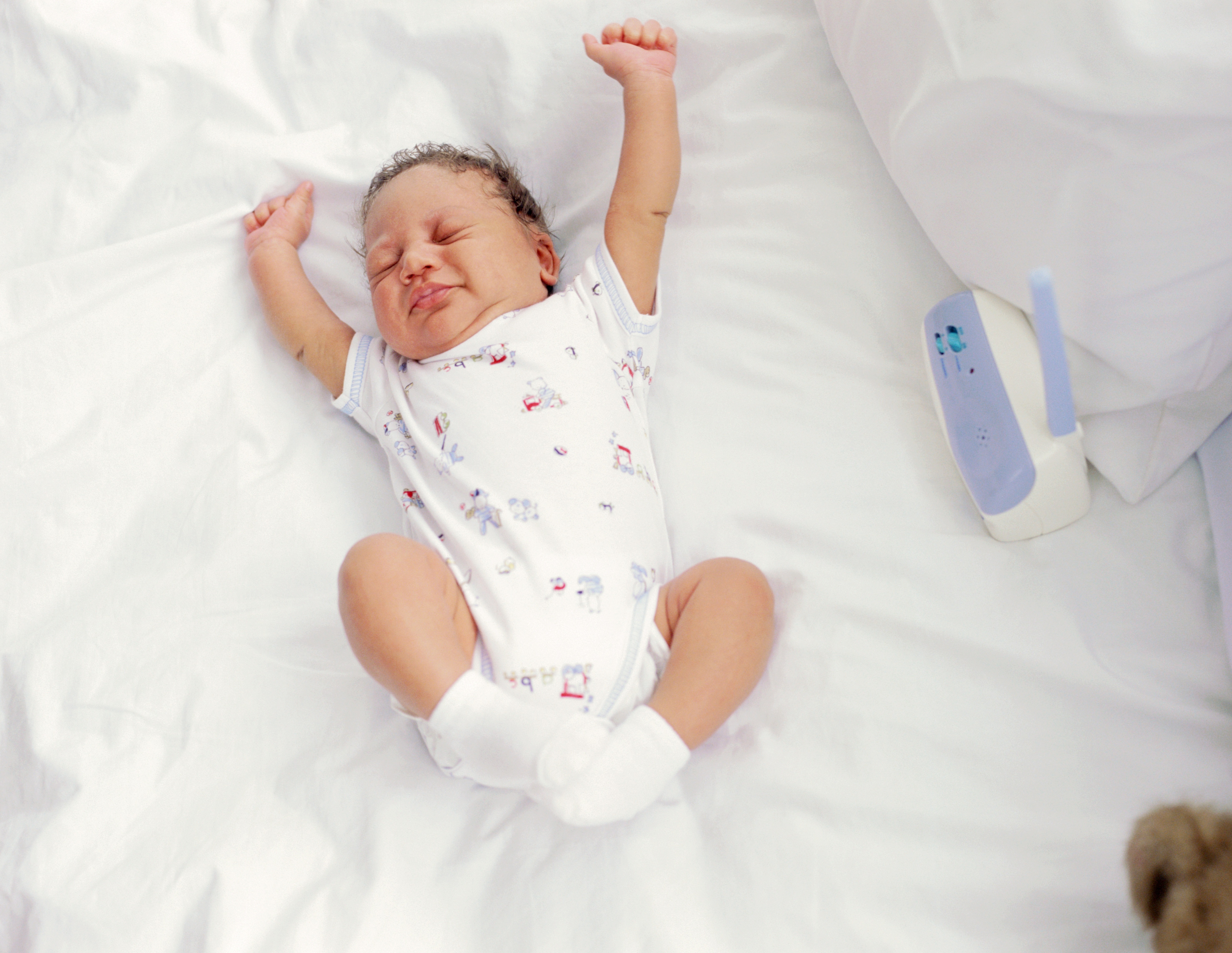
It’s reassuring to know that wherever you are in the house, you’ll catch the first squeak once sleep time is over. Monitors are a great way to make sure you can keep an eye on your baby without having to stay in the same rooms as them. Monitors can range from battery operated ones that just relay sound to video monitors and cameras that live stream from the room. Costs vary but it's important to get one most appropriate to you and your needs.
A baby monitor has two parts: the ‘baby unit’ or transmitter with in-built microphone and / camera, and a second hand-held ‘parent unit’. You place the baby unit near your baby’s cot, and it transmits sound (and footage, if you choose a video monitor) to the parent unit, which you keep near you when your baby is sleeping. Some can even be carried around with you from room to room.
If you live in a small house or flat and think you’ll hear your baby stirring at night or during nap time, you might feel that you can do without a baby monitor. Actually, lots of mums like the peace of mind a monitor brings – it’s very reassuring to watch your baby sleeping peacefully while you enjoy a hot cup of tea or your favourite TV show!
Think, too, about where you’ll place the baby unit to get the best possible coverage of your baby, whilst also ensuring it’s safely out of your baby’s reach. Some baby units are designed to be wall-mounted in your baby’s room, while others require dedicated shelf space close to the cot.
The other advantage of a baby monitor is that you won’t need to creep into your baby’s room at night or during naps to check on them – risking waking your little one. You’ll see or hear your baby stirring via the parent unit the moment they wake. A video monitor is especially useful once your baby starts sleeping in her own room at night, as you can check on her easily without getting out of bed. Make sure you choose one with good night-vision features, as some monitors offer better picture quality during the day rather than at night.
Instead of a parent unit, some video monitors display the footage from the baby unit straight to an app on your smartphone or laptop. These are ideal if you’re a gadget fan and use your phone a lot. This type of monitor often has the option for you to take pictures or video of your baby, which can even be shared with friends and family – a lovely feature if the grandparents aren’t getting to see your baby as much as they might like.
Some video monitors also have movement sensors. This is usually a pad which you place underneath your baby’s mattress. It sounds an alarm if no movement is detected from your baby after a certain period of time. Many mums love the extra reassurance of a movement sensor while others feel it makes them more anxious. If you choose one, be prepared for the occasional false alarm. And remember that you’ll still need to check on your baby regularly.
Most video monitors have a range of at least 200 metres, so you can rest assured that you’ll hear your baby via the monitor if you’re on a different floor during her nap. If there are several floors, long corridors or thick walls between your baby’s room and wherever you’re likely to be when she’s sleeping, make sure you choose a monitor with sufficient range.
Finally, don’t get sucked into spending more on a monitor with lots of extra features that you might not use. These can seem impressive but the more functionality your monitor has, the more likely you are to spend nap time fiddling with your monitor instead of relaxing while you can!
Moses basket
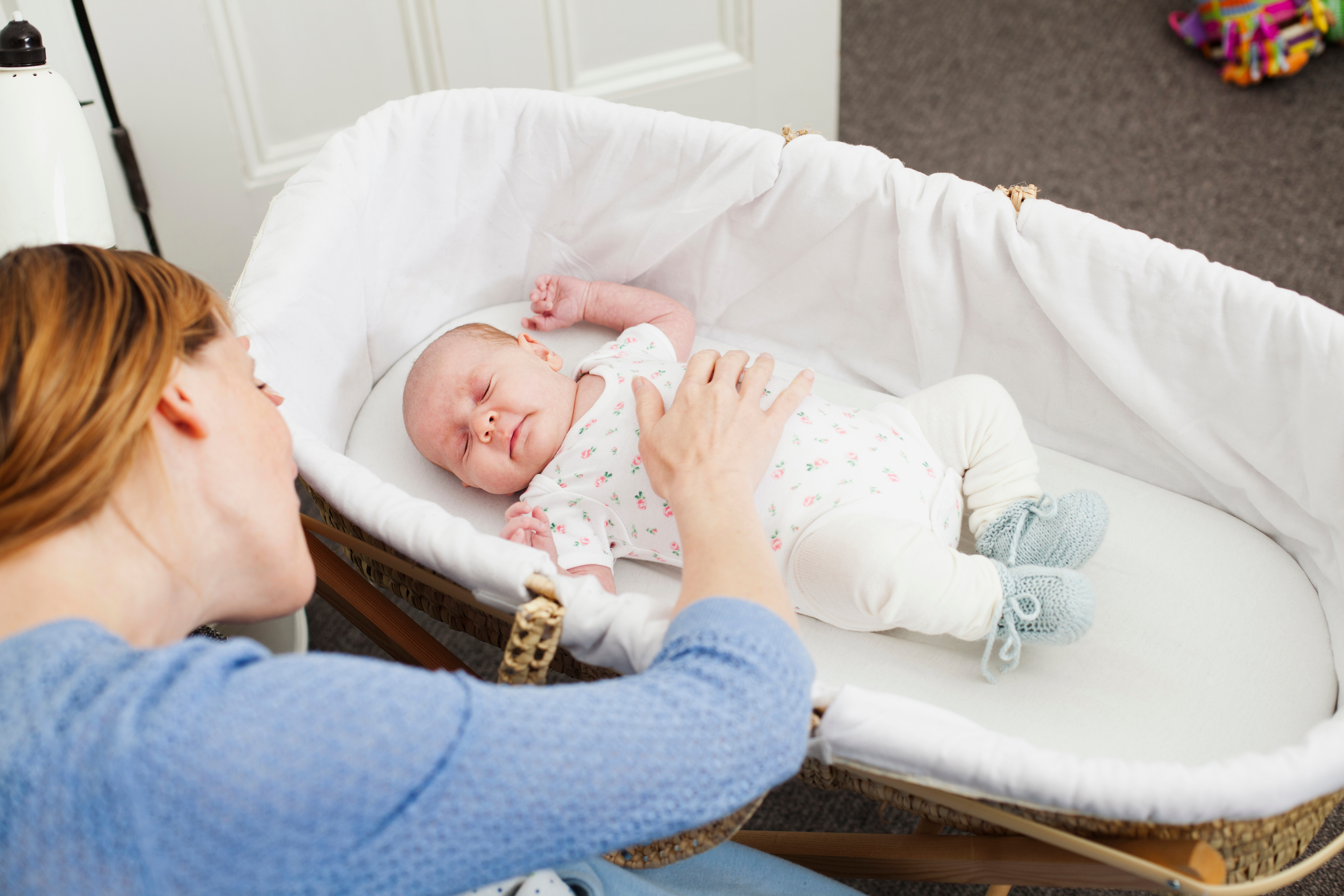
A Moses basket is not always essential, especially if you do not have space but some parents prefer them to a cot for the first few months as you can easily transport them around the house or place them close to your bed. Moses baskets should be placed on a flat surface on the floor or you can buy a stand to go with it if you wish to place it at eye level by the bed.
The big advantage of a Moses basket is that they’re much smaller than cots, so ideal if you’re short on space in your room. The downside is that your baby will outgrow it quite quickly and probably well before six months. If you don’t want to put your baby straight into a cot and can afford it, a bedside cot is a good choice. It’s a higher-tech version of a Moses basket as it’s designed to be attached to your bed, allowing you to co-sleep safely with your baby.
Carrier or sling
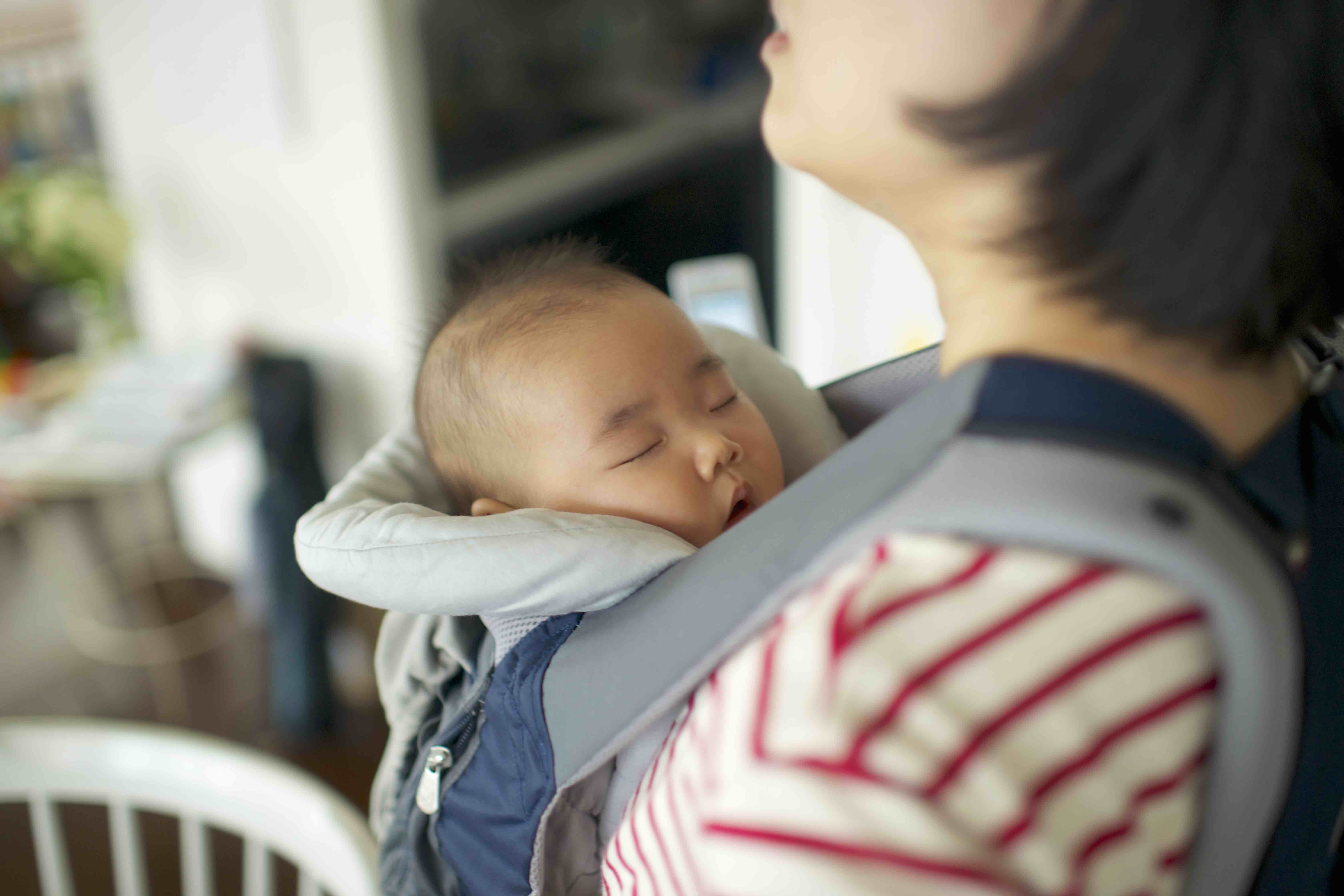
There are many benefits to babywearing or carrying your baby in a sling or carrier. Slings are long pieces of fabric which you use to wrap your baby onto your body, whereas baby carriers have a more structured seat for your baby, with shoulder straps and waist buckles to fasten the carrier to you.
Most babies love being carried like this, so it’s also a great way to bond. A baby carrier is a practical alternative to a pushchair, especially if you have an older child. It leaves your hands free to push a buggy or hold an older child’s hand. Popping to the supermarket or dropping an older child to nursery can also be easier without bringing a pushchair along.
If your baby suffers from colic or reflux or generally settles best when being held, a carrier is a good way of comforting your baby while leaving your arms free.
All baby carriers have their own minimum and maximum weight recommendations for each different carrying position – check this to make sure it’s suitable for your needs and your baby’s age.
Most baby carriers are machine-washable and made from durable fabric, so they’ll withstand the elements but invest in one with more robust weatherproof properties if you're outdoors a lot – some have hoods and rainproof covers.
Many baby carriers are suitable from birth until your baby is three or four yeas old, but the weight distribution of carrying your baby changes as she gets heavier. Keep in mind that a baby carrier that seems perfect for a newborn might not be very practical for an older child. Choose one specifically designed to last for the period that you plan to keep using it.
Some baby carriers also allow you to breastfeed without removing your baby from the carrier.
Choose a hip-healthy carrier that supports your baby's thighs to the knee and positions her legs in a ‘M’ shape.
Guidelines also recommend following this ‘TICK’ checklist for using a baby carrier safely:
- Tight – the carrier should be tight enough to hug your baby close.
- In view at all times – you should able to see your baby’s face.
- Close enough to kiss – your baby’s head should be that close
- Keep chin off chest – this ensures your baby’s breathing isn’t restricted.
- Supported back – prevent your baby from slumping to ensure her airways are clear.
Whether a wrap-around or clip-style, a sling is one of the most reliable ways to keep your baby happy, while leaving your hands free. A carrier or a sling will make sure your baby is warm and cosy pressed against your chest. It's also a great way for your partner to bond with your little one.
There are a few different types of carriers or slings you can choose from.
Breast pump
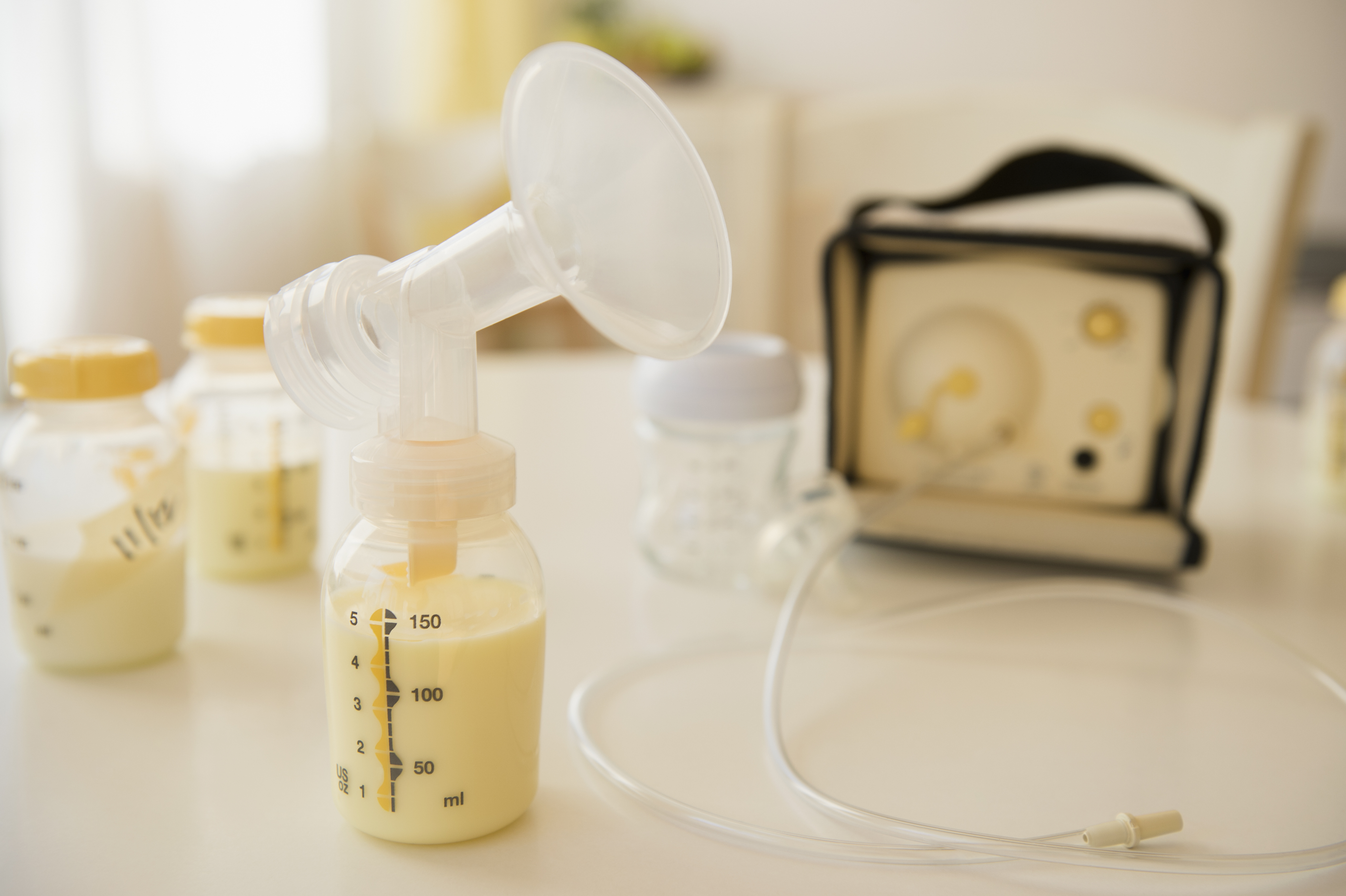
If you’re breastfeeding, supportive nursing bras and good quality breast pads are essential. A breast pump is a machine which you use to express or ‘pump’ your breastmilk so that it can be given to your baby in a bottle.
A breast pump may be a little pricey, but its well worth the money if you want to give your breast a rest or store milk ready for days out or night time feeds. It's an essential item if you are planning to have your partner help with feeds - especially during the night as you can pump in advance so bottles are ready for feeding.
Expressing breastmilk also enables you to return to work but continue breastfeeding your baby, as your milk can be bottle-fed to your baby by a care-giver.
Some mums find that expressing even small quantities of milk between feeds can help to stimulate milk flow and boost breastmilk supply.
There are two different types of breast pump; manual ones, which are operated by hand, and electric pumps which require a mains power supply or battery. Manual pumps are better suited to occasional use as they are less efficient. Electric breast pumps are designed for frequent use.
Double electric breast pumps are also available. These allow you to express milk from both breasts at the same time, and are ideal if you need to express lots of milk, such as when feeding twins or a premature baby.
Hospital-grade breast pumps can also be hired. These are very efficient at expressing a high volume of milk in a short period of time.
Feeding bottles and sterilisers
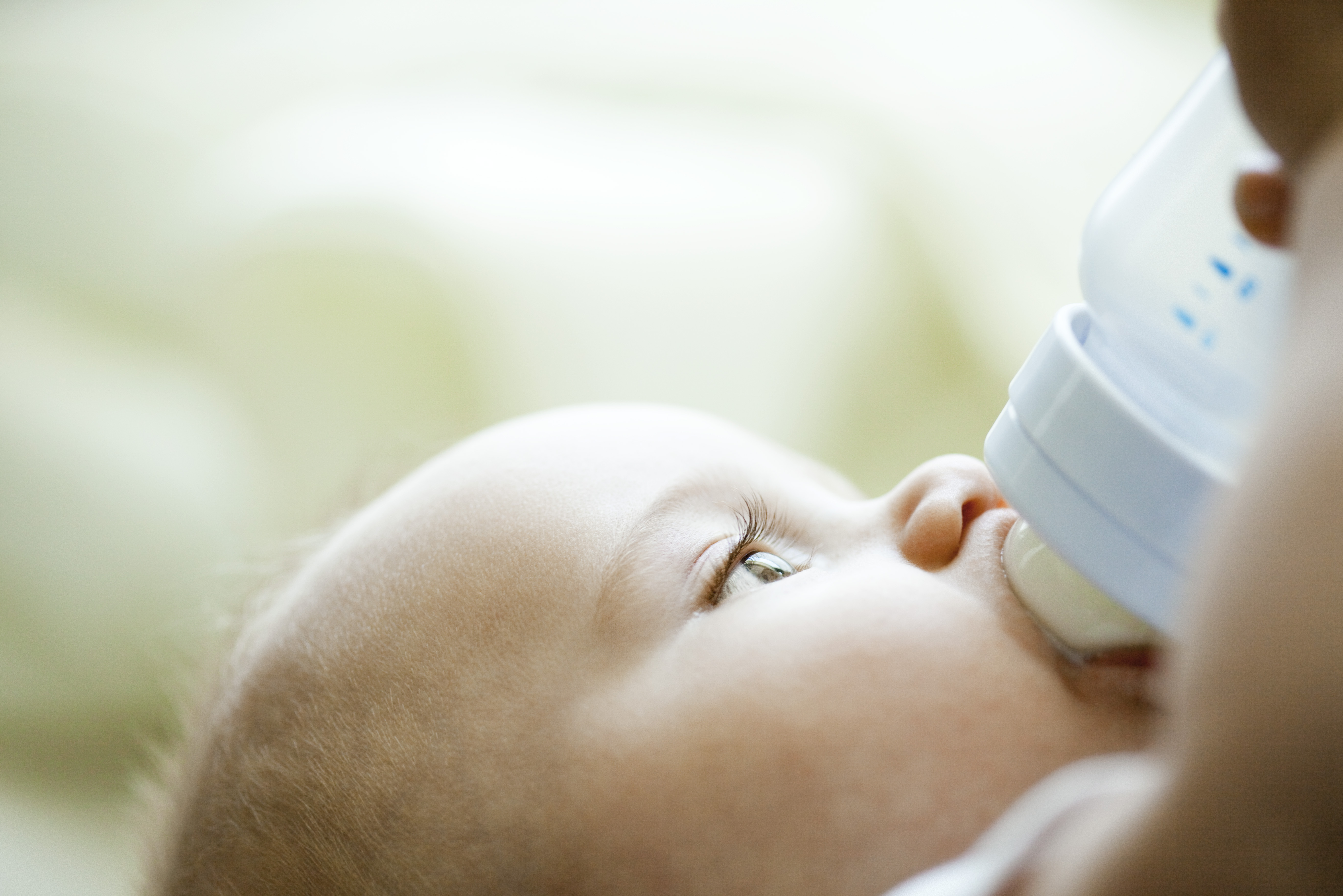
For bottle-feeding, you’ll need bottles and teats, infant formula milk and a steriliser (steam, cold water or microwave) and a bottle brush to make sure your baby’s bottles are clean and safe to use.
It's very important to keep all the bottles you use sterilised so your baby doesn't get an upset stomach or any unwanted bacteria in their system. There are lots of different designs to choose from but all tend to do the job efficiently.
If you’re planning to breastfeed your baby, you might be tempted to do without bottles and feeding equipment. However, you might find yourself choosing to give your baby formula milk or expressing your breastmilk. It’s much easier to make these adjustments in your feeding plans if you have all the necessary equipment in the house – it can be stressful to go shopping for such things under pressure with a hungry baby. If you don’t end up needing the feeding equipment, you could always return it unopened or sell it on.
Lots of mums find that they end up trying lots of different bottles until they find one that their baby likes, so don’t buy lots of bottles until your baby is here. A pack of six bottles is enough to get you started – you can always send a relative shopping for more if you need them once your baby has arrived. Feeding bottles come in two different sizes. A standard bottle holds 4fl oz of milk, which is plenty when your baby is first born. Newborns have tiny stomachs so they can only digest a small quantity of milk, and they feed very frequently. As your baby gets older and hungrier for more milk at each feed, you’ll probably find you need to switch to a bigger bottle that can hold 8fl oz. Some mums prefer to buy bigger bottles from the beginning of their feeding journey, but a large bottle can seem enormous alongside a newborn.
Anti-colic bottles are designed to reduce colic symptoms by reducing the amount of air your baby swallows during feeding. Some mums find these very effective but, again, it’s a matter of personal choice as to whether you find them suitable for your baby.
Choosing the right teat for your baby’s bottle is very important. Teats have three flow rates; slow, medium and fast. Most newborns will need a slow flow teat while they get to grips with breastfeeding. You can move on to a faster flow teat once breastfeeding is established and if your baby shows signs of wanting more milk, faster. If the rate of flow is too fast, your baby may cough or or dribble. It’s a good idea to have a stash of different flow teats in the cupboard so that you can easily move onto the next one when your baby is ready. Shopping for teats with a hungry baby isn’t fun for anyone!
Changing bag

So you thought your gym bag was complicated? Just wait until you start packing a bag with everything you’ll need to go out with your baby! The best bags are designed to make it easy to access all the essentials, and will usually incorporate a changing mat. Another useful feature of a change bag is a wet pouch where you can stash used washable nappies or soiled baby clothing without worrying about it making your bag wet. An insulated bottle pouch is also useful for storing a bottle or baby food.
You'll never love a bag so much! Make sure you get a good sized changing bag – you may think small is better, but sometimes getting a bag a little bigger than you think you need will help you fit in all the essentials – plus you can put your stuff in it too like car keys, your purse etc.
Think about which style of bag will suit you best. Some mums like shoulder bag style change bags that can hang on the handles of their pushchair, while others prefer back-pack style change bags that leave their hands free.
Change bags are available in a huge range of styles and designs, and they seem to get more sophisticated every year. You get ones that look like designer handbags and others that are more like stylish weekend bags. One thing’s for sure, you’ll be carrying this thing with you for a good while to come, so shop around to find one that you’ll really love. And ask other mums for their change bag recommendations!
Newborn nappies
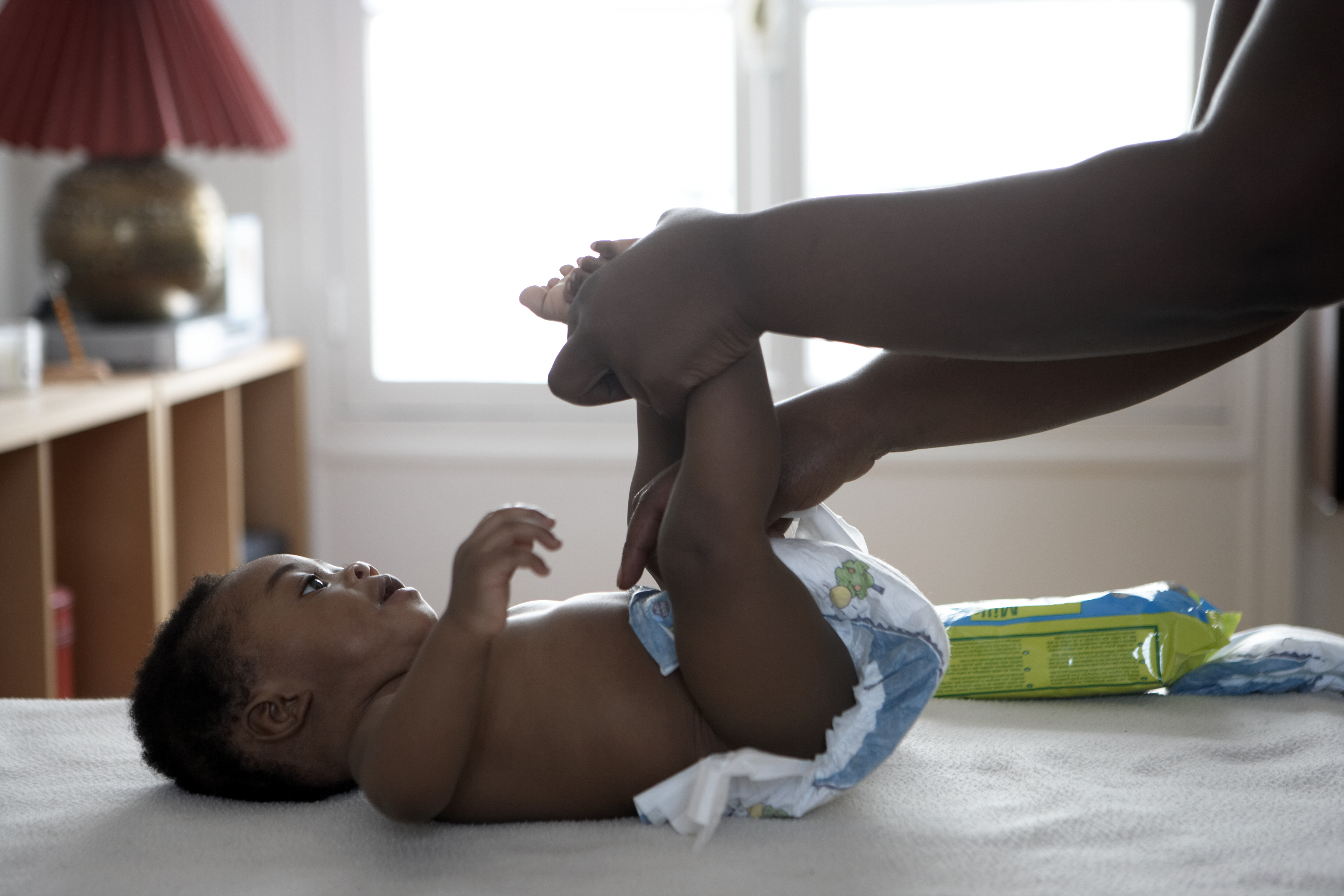
Don't buy too many nappies in newborn sizes unless you know you’re expecting a very small baby – it’s incredible how quickly they grow and you don't want to be left with bulky stock you can’t use.
Invest in a changing station or create an area that’s the right height for changing your baby and won’t put strain on your back – and make sure you have everything to hand. Nappy sacks are useful for disposables, too.
Don’t be daunted by the thought of washable nappies, either. They are a much ‘greener’ option than disposable nappies, and who doesn’t want to do their bit for the future of the planet?
Lots of mums find the washable nappy ‘scene’ is a lot of fun and a bit addictive! Washable nappies consist of a printed waterproof outer layer, known as the wrap, and these come in a huge range of fun, colourful prints and designs. Inside the wrap, the nappy contains a highly absorbent, washable inner layer. Talk to friends who’ve used washable nappies to find out more about whether they could work for you and your baby.
Newborn clothes
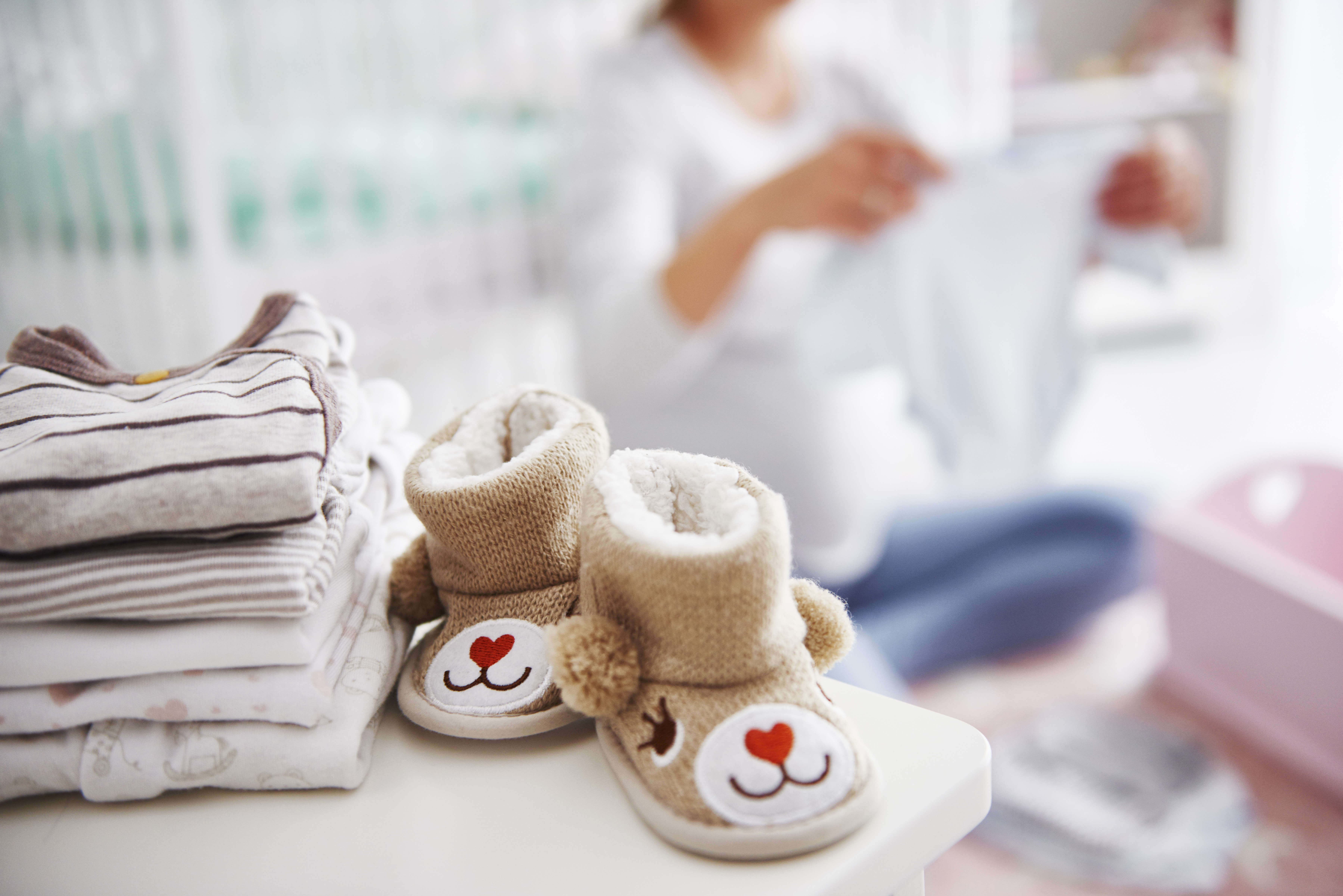
One of the loveliest things to shop for is baby clothes. You’ll probably be given lots of cute sets, but make sure you invest in a collection of basic popper-fastening bodysuits and babygros – it’s amazing how often your baby will need a fresh change.
Vest tops are a great buy too - especially in the colder months when your little one will need plenty of layers. A padded coat, knitted hat and mitts will come in handy during the winter, too. You really don't need to overdo it with clothes – you can always pop out and buy more or order online.
You might want to invest in a ‘going home’ outfit for your baby, and this is likely to be something you’ll want to hold onto as a keepsake once it's outgrown. Aside from that, a stash of simple, cotton baby clothes is all you’ll really need in the early weeks when your baby will mostly sleep and eat.
Nursing pillows
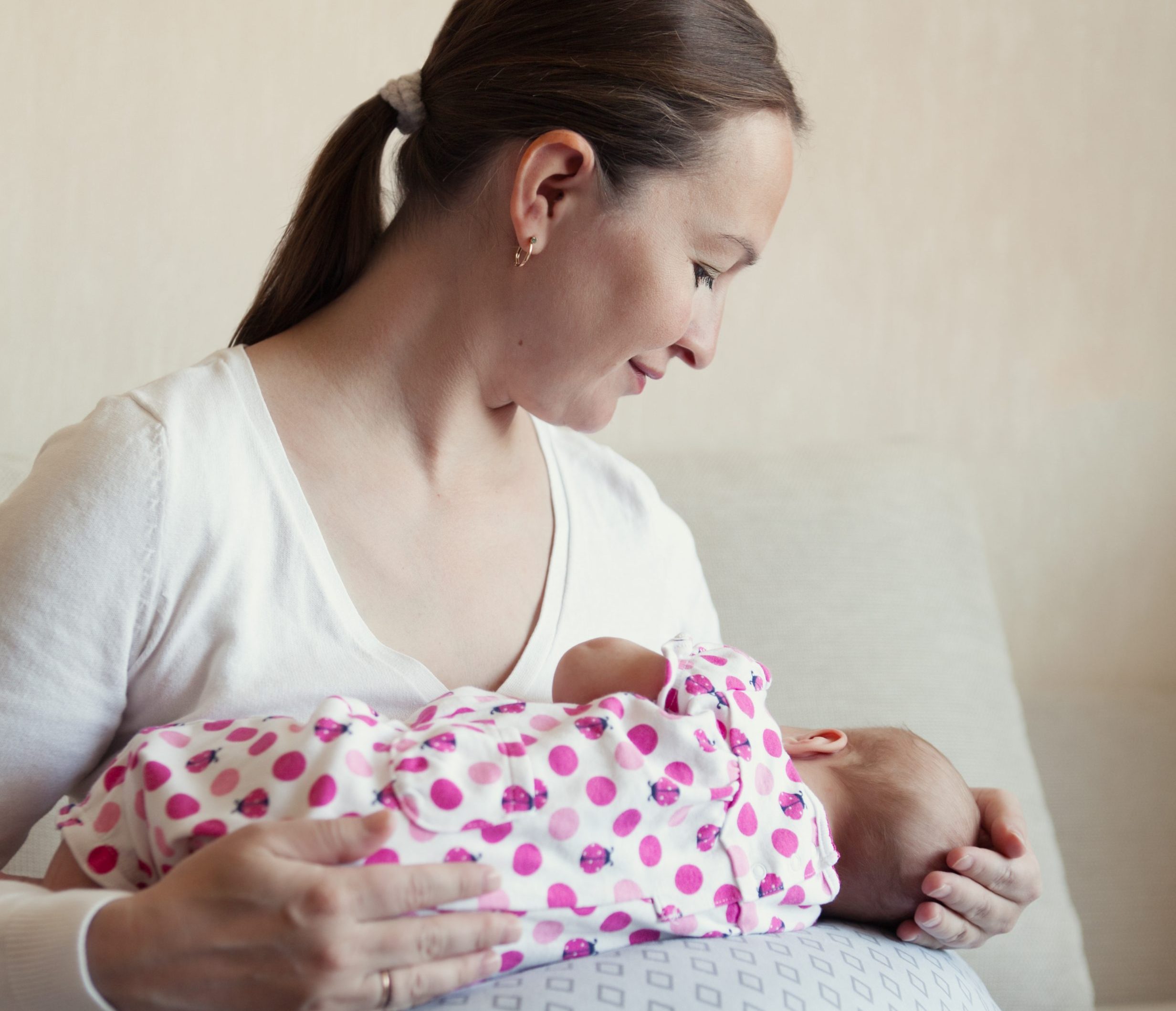
It’s important for you and your baby to feel comfortable when you’re feeding and a nursing pillow can do just that. There are so many varieties to suit you, from full body support pillows to V-shaped support pillows – all are safe and easy to use, so it's up to you which style you go for and how much you choose to spend.
Most nursing pillows have a 100% cotton cover and are machine-washable, which is great if your little one is a messy feeder or they have any nappy leaks whilst lying on it.
Some nursing pillows are also designed to be used to support your back during pregnancy. These are well worth investing in and although they may seem expensive, the fact that they’re multifunctional means you’re getting value for money.
Baby bath
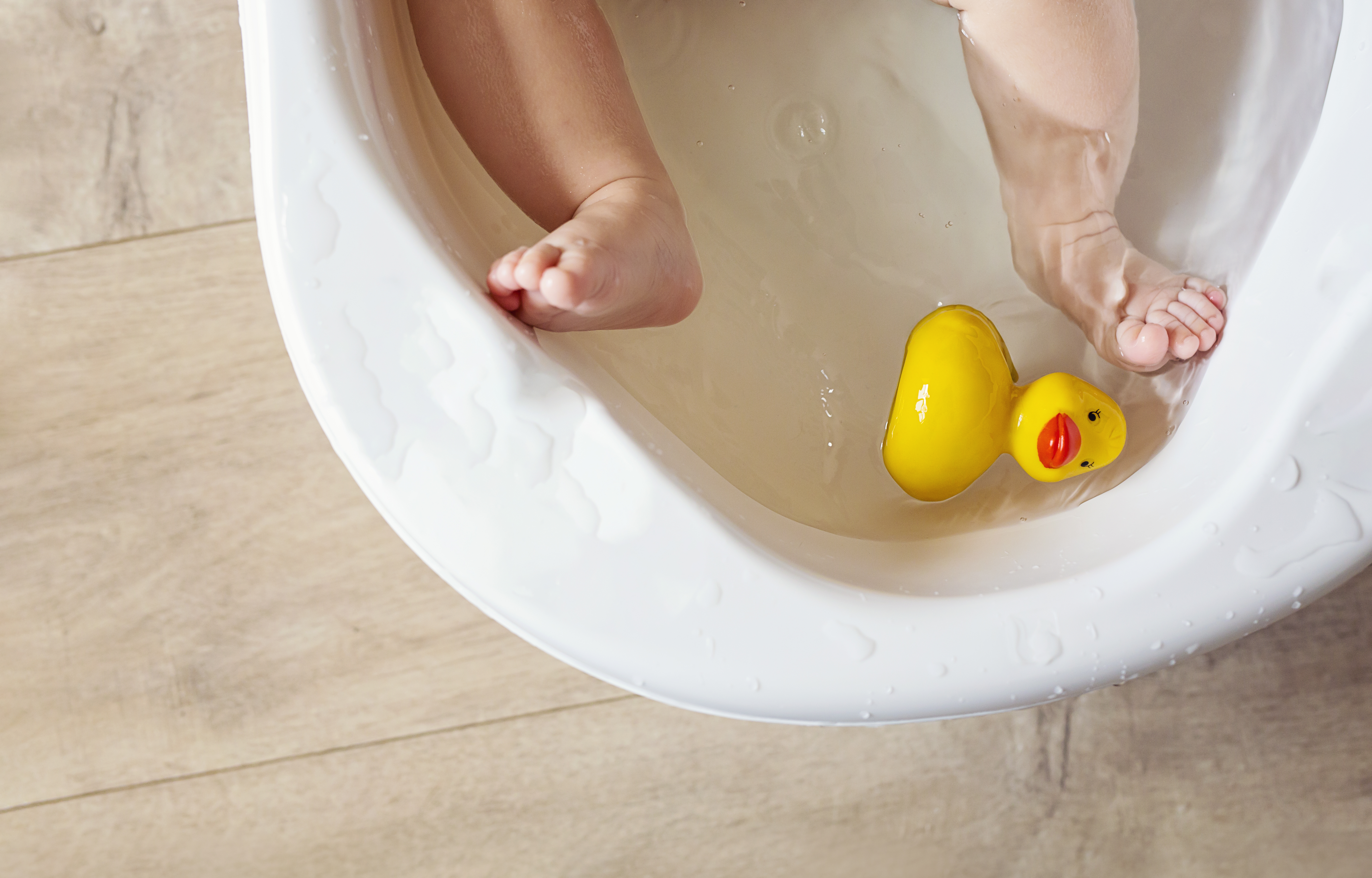
You can wash your baby in the bath in shallow water but it'll be a while until your little one can sit up on their own. A baby bath is a great option for making sure you have plenty of control over your baby whilst washing. A baby bath is also a good option if you don’t have a bath in your house or flat, as it is often free standing. They're also easy to transport, so ideal for weekends away.
Baby baths come in all sorts of shapes and sizes, from bucket-like tubs that submerge your baby up to the shoulders, to seat-style baths that support your baby in the water whilst leaving your hands free. Some babies love the water, while others aren’t fans of getting wet. If your bathroom is cold or draughty, consider buying a tub-style bath that you can use on the floor in a warmer room of the house.
No baby bath time would be complete without a moisturising and kind to skin bath soak. And our pick is Mini Mio's Tub Time Bath Bubbles, designed with your baby's needs in mind. It leaves skin clean, soft and protected from any dryness thanks to its special Omega rich formula.
Remember, too, that babies grow quickly. So another essential to consider is investing in a non-slip bath mat - for when your baby is ready to move onto the adult bath.
Changing mat or changing table
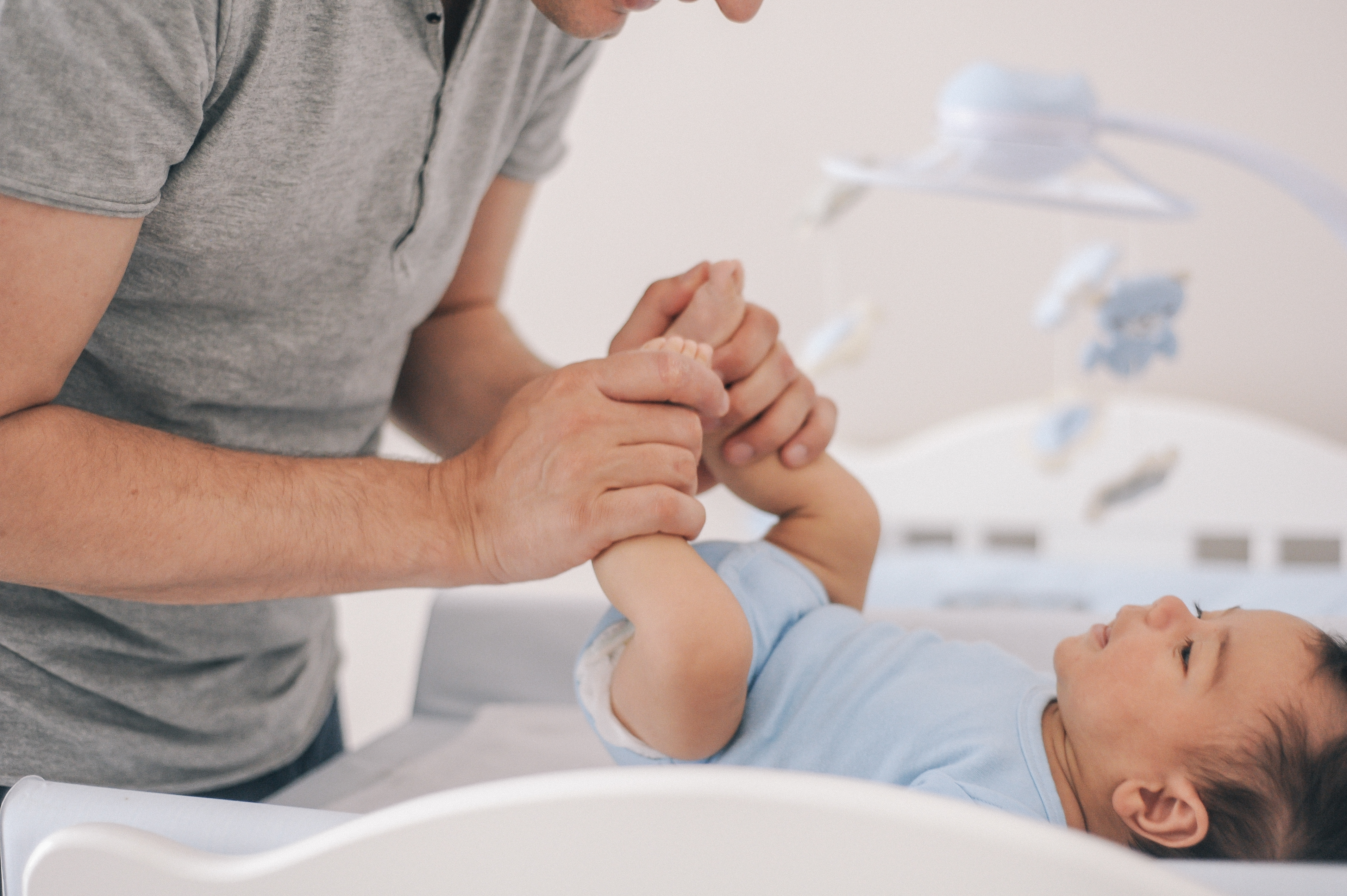
Changing tables do look very efficient but they're not necessary if you don't have the space. A changing mat is much cheaper and you can place it on the floor or a flat, raised surface to protect your back. Buy a changing mat with raised sides so your baby won’t wiggle away.
If you'd prefer a changing table, however, look for a sturdy table that fits a changing mat securely and has plenty of space for the essentials; nappies, wipes, baby cream etc. Make sure it's at a good height too, so you don't have to bend down too far or strain your back.
Lots of nursery brands do changing tables as part of a whole collection of co-ordinated nursery furniture. This can look beautiful in your baby’s room but unless you’re going to do all the nappy changes in there, you might find that a change mat on the floor is all you need.
A change table is outgrown quickly too, at which point you might find you’re left with a piece of furniture you don’t really need. To avoid this, think about buying a multifunctional change table that you’ll still get some practical use from once you stop using it for nappy changes.
Muslin cloths
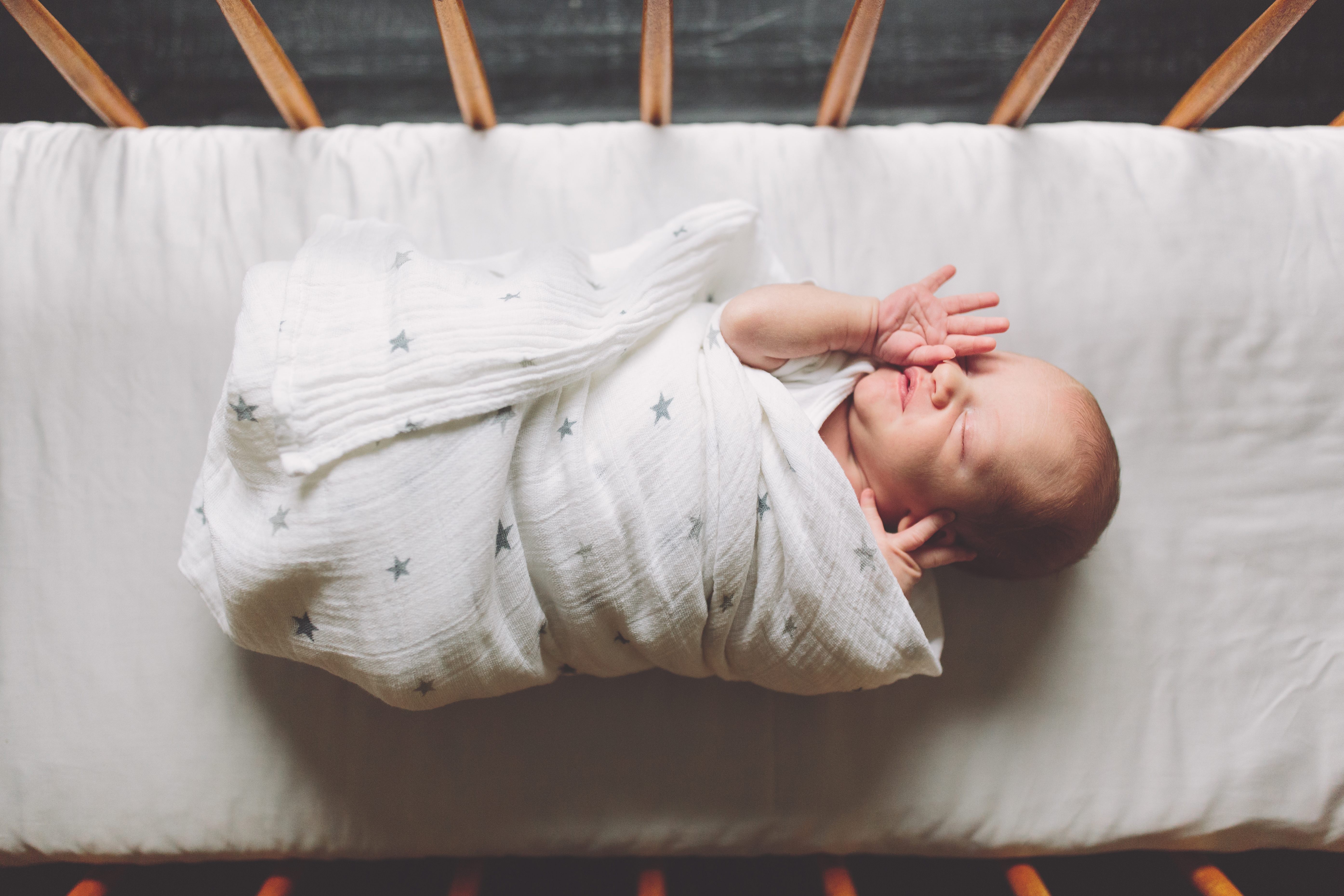
No one understands the joy of muslin cloths as much as mums. Having a baby is a messy time and having a pile of them around the house is a great way to quickly mop up spilled milk, spit-up and nappy leaks. You can’t really have too many muslin cloths, so it’s worth investing in several multipacks – you’ll be using and washing these more than you can imagine! They range in price from budget ones that you can pick up in the supermarket, to exclusive designer prints.
Optional extras
Baby bouncer
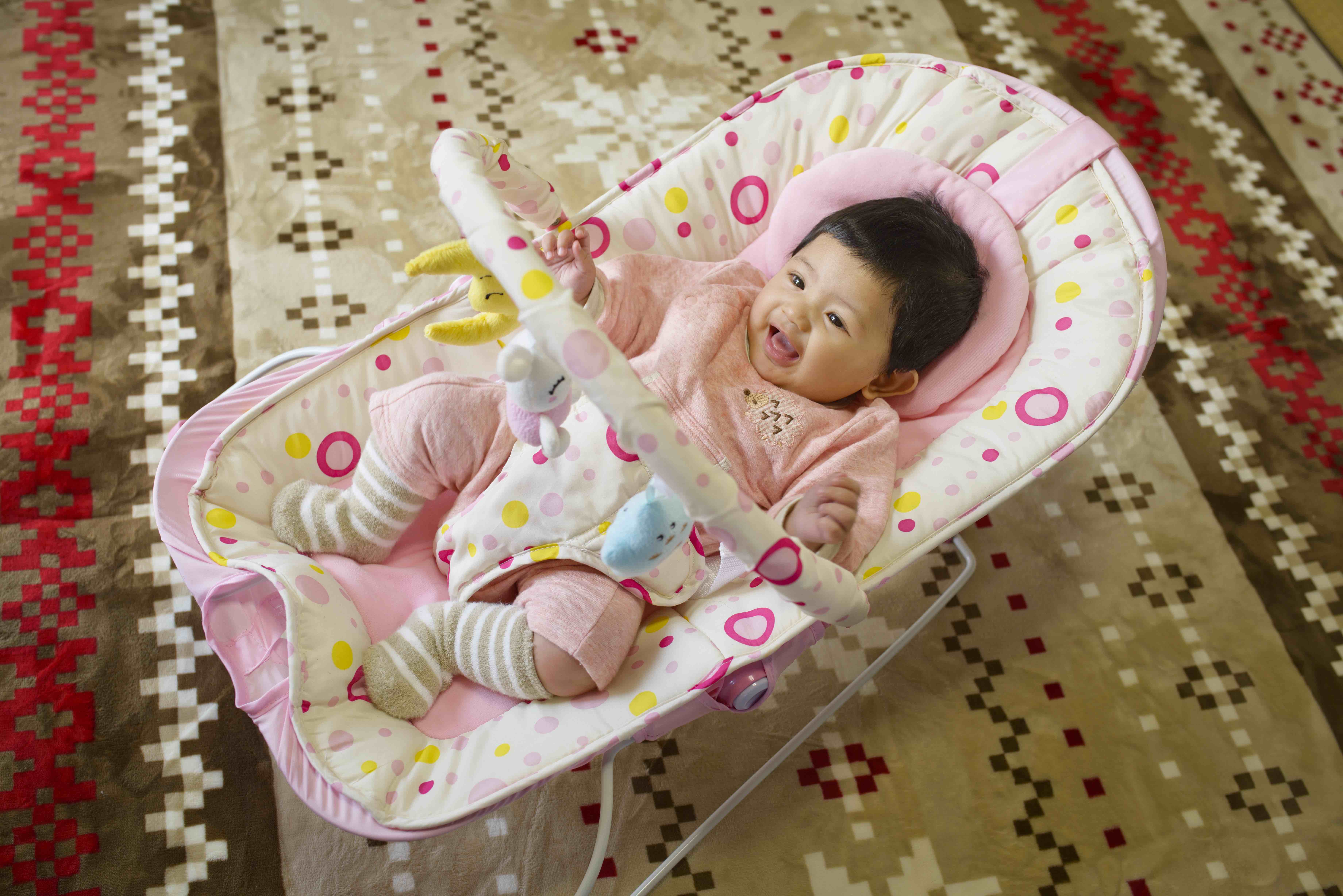
Baby bouncers - also known as bouncy chairs - are soft, comfortable seats which have a harness to strap your little one into. They are ideal if you want to set your baby down next to you while you are eating or sitting on the sofa - especially if you need two hands to do something. The bouncing nature can also help to calm a baby down when they are being fussy.
Baby bouncers vary in design from simple, fuss-free versions to high tech ones with light, sound and music features to help keep your baby entertained. Some also have vibrating or rocking features which can help to soothe an unsettled baby, and others have swing-like functionality which helps some babies drift off to sleep.
Some parents don’t like the idea of their baby relying on movement or vibration to fall asleep incase they become reliant on being rocked to sleep. However, remember that your baby should not sleep in a bouncer chair but in a cot, crib or Moses basket.
It's important to note that most babies will outgrow their bouncer by about nine months. If a baby is active then it's unsafe to put a baby in a baby bouncer, as they could potentially roll over with the bouncer attached. This product is best for newborns and younger babies who have limited movement.
Travel cot
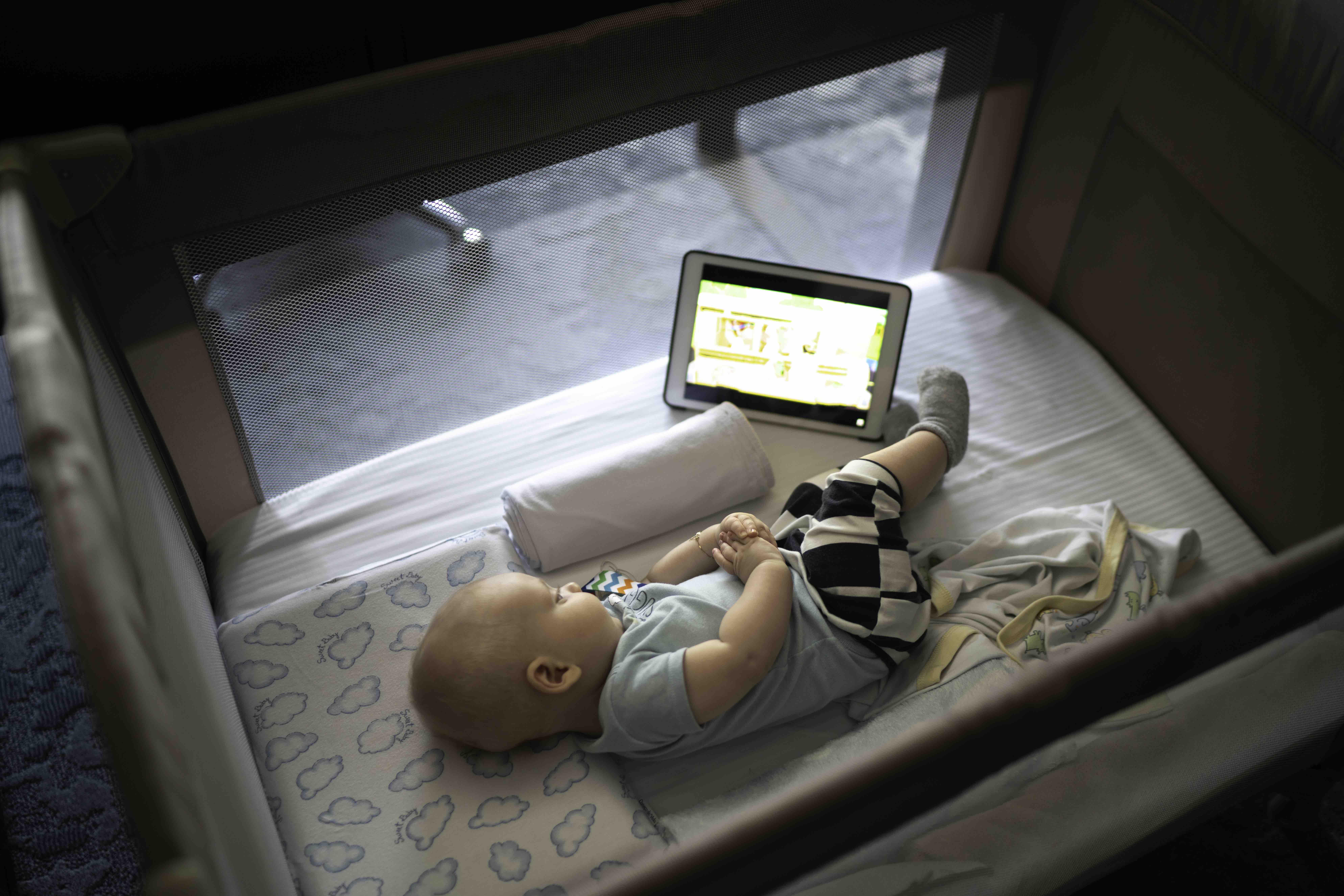
Ideal for a night away or a holiday, travel cots are designed to be easily transported. They're also great for keeping at a relative's house, so a baby will always have a bed when they go to stay there.
The lighter models are better for travelling but these tend to take longer to put together, whereas the slightly heavier products are easier to assemble. It's worth thinking about what you would be using it for and researching the height and weight which would work best for your family.
You don’t need a travel cot if you already have a Moses basket or a carrycot suitable for overnight sleeping that you can take away with you. However, a travel cot will last longer and is less bulky to travel with. If you don’t go away very often, consider borrowing a travel cot from friends rather than buying one, as it’s an expensive purchase if you’re not going to use it very often.
Travel cots come in a variety of sizes and styles, with different upper age and weight limits. Most are suitable from birth until your baby weighs 15kg (approximately three years old), but some aren’t suitable beyond 18 months – these tend to be very lightweight, so they’re not robust enough for use with heavier babies or toddlers.
An adventurous toddler may be able to climb out of a travel cot, depending on the height of the sides, so by that stage it’s safest for your baby to sleep in a bed of their own when you’re away from home overnight.
All travel cots are designed to be light enough to carry, but some are heavier than others. Choose one that’s light and practical to transport. Wrestling with an unwieldy travel cot and a tired baby after a long journey can be stressful, so choose one that's easy to set up. Some travel cots can be assembled and folded away within seconds, even with one hand. And always try out your travel cot at home before your first overnight trip to make sure you're comfortable with how to set it up and fold it away.
Some travel cots are suitable for use as playpens, which can be useful if you're staying somewhere less baby-friendly than your normal environment. Check the manufacturer’s guidelines to make sure it’s approved for use as a playpen – not all travel cots are.
Baby thermometer
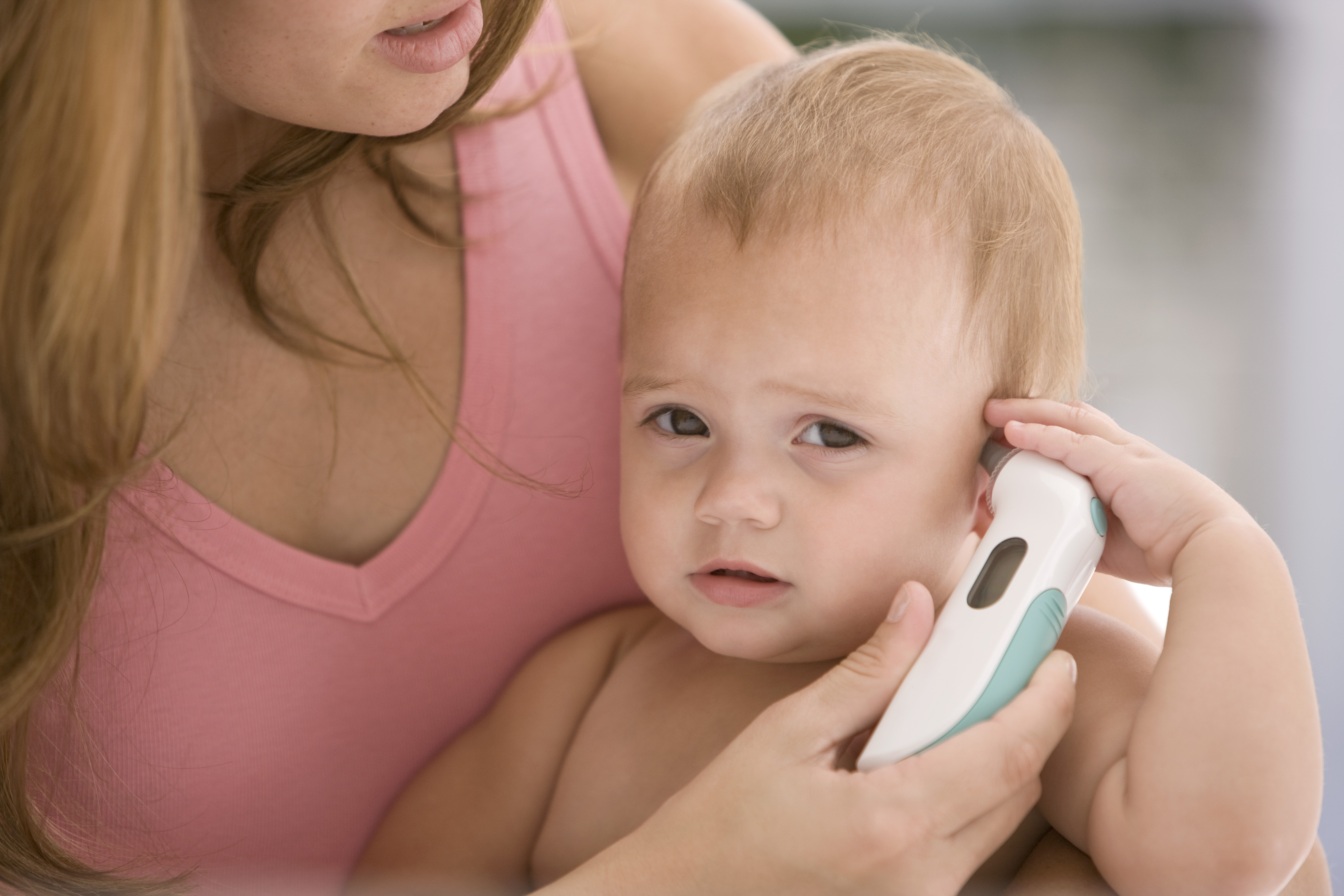
Above all other things, parents just wants their babies to be healthy and happy, and a thermometer is a great way to give peace of mind. The NHS has warned against the use old mercury thermometers, as they can break and release small splinters of glass and highly poisonous mercury, but it says that a cheap, digital thermometer from a supermarket, pharmacy or online is absolutely fine. These digital thermometers give body temperature readings in just a few seconds.
There are three main types of baby thermometer – digital ear thermometers, which read your baby’s temperature from her ear; non-contact thermometers, which use infrared technology to check your baby’s temperature without touching her; and smart digital thermometers that can connect to an app on your smartphone. Whichever one you choose, stock up on spare batteries and closely follow the manufacturer’s instructions to ensure you’re using it correctly.
In addition to these body thermometers, there are also bedroom and bathroom ones which make sure that a baby's surroundings are the optimal temperature. This is important because a baby can overheat if the room temperature is too warm, and you may wish to add a layer of clothing to your baby if the room is chilly.
Baby gym
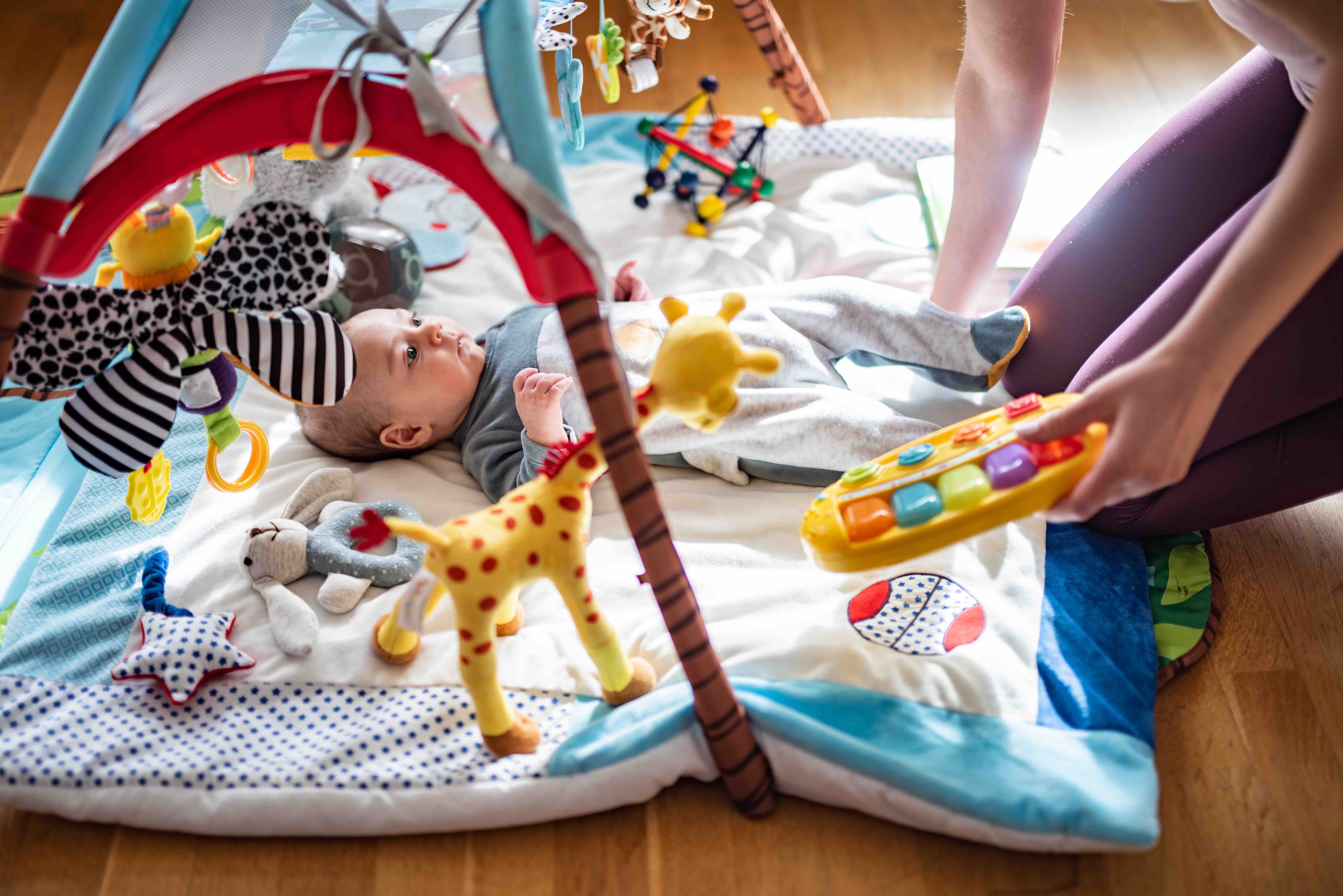
Baby gyms - also known as play mats, activity mats and play gyms - offer a space for your baby to relax and entertain themselves. Although most are safe to use from birth, babies from three to six months tend to get the most of these baby gyms. Most products feature a comfortable mat for a baby to lie on and a variety of multi-sensory toys attached to a part which hangs above.
A play mat is a good way of encouraging your baby to spend time lying on her front, which is important for developing the muscles she’ll eventually need for rolling over, crawling and walking.
For newborns and young babies, look for a playmat with black and white features to stimulate your baby’s developing eyesight. Interesting textures, musical features and a mirror in which your baby can see herself are other elements worth looking out for when you’re buying a baby mat.
If you’re short on space, consider choosing a baby gym that you can fold away easily in the evening once your baby has gone to bed.
Baby essentials recommended by real mums
We all want to buy the right things for our new baby but make sure you avoid the things you really don't need. So we asked 6 new mums to tell us about 5 products they've loved and 5 they wish they hadn't shelled out for during the first 3 months with their new baby.
We've also done a round up of baby products that are definitely not worth buying - as voted by you!
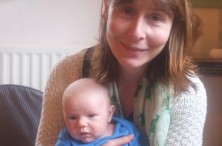
Jolene, 34, mum to Huxley, 12 weeks
Baby products you love
1. Second-hand BabyBjorn bouncer - Hux can look around, watch me cook and it frees me up to do things. Also I got it on eBay for half the price of a new one. Hardly any wear and tear.
2. Sock-ons. These go over baby's socks and keep them on. Cheap as chips, never lose another sock and you only need one pair!
3. Neal's Yard organic baby oil. It's the only thing that doesn't dry his skin out.
4. Angelcare nappy bin. This bin is always on offer on Amazon and you can get it for as little as £5. Each nappy is locked away inside the sealed nappy sack. No more smells.
5. SkipHop change bag. Loads of pockets, easy to get the change mat out with one hand, clips to the pram, very light.
Baby products that didn't work for you
1. KariMe baby sling. If you have a squirmy, active baby with a large head then don't bother with this sling! My baby was very uncomfortable and we only managed a few minutes. Also my smaller body shape means it easily comes loose.
2. Johnsons baby bath. I found this gave him very dry skin.
3. Lamaze play mat. I wish I'd got a padded material one as while it's bright it's very hard and Huxley doesn't really relax on it.
4. Babygros that do up at the back/have loads of poppers. Who can flip a baby in the night? Why spend hours trying to popper up a baby when you can buy babygrows with a zip?! I love the ones in Gap.
5. Merino swaddle wrap. It cost almost £40 and a simple blanket does just as good a job.

Steph, 26, mum to Sophie, 13 weeks
Baby products you love
1. Tesco baby vests (available in-store). Cheap, easy to get baby in and out of, and not a big deal if they get ruined. Also long-sleeved versions are great to put under T-shirts so you can get the wear out of them even in cooler weather.
2. Cot top changer. We didn't have a chest of drawers we could put a changing mat on and this has been worth every penny in saving our backs!
3. Swaddle-Me blanket. Only a tenner and a life saver in the early days when she smacked herself in the face every 10 seconds. Also very easy to use.
4. Tommee Tippee steriliser. They do a hot and cold steriliser in their basics range which is loads cheaper than their Closer to Nature one, but fits the same bottles.
5. Supermarket own-brand nappies. Do the job just as well as Pampers and much cheaper. I've tried Tesco, Sainsbury's and Morrisons and they're all fine.
Baby products that didn't work for you
1. Baby baths with no support. I found mine pointless as you have to hold them the whole time. A moulded baby bath with support or a chair for the main bath is a much better bet.
2. Babygros with no feet. Why no feet?!
3. Tommee Tippee breast pump. My milk went up the air tube, leaked everywhere and turned mouldy. The Medela breast pump was miles better - very quick, easy to assemble and wash.
4. Sun umbrellas. They're meant to clip onto the side of the pram, except they don't; they fall off all the time!
5. Breastfeeding tops with hidden openings. It's much easier and cheaper to buy normal baggy tops that just lift up.
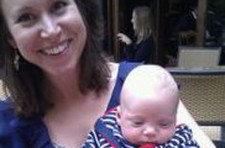
Alex, 33, mum to Thomas, 20 weeks
Baby products you love
1. Baby Bjorn carrier. Great for country walks and around the house when baby is being needy, good for dads too.
2. Sleeping bags. Cambridge Baby does a Merino one for babies smaller than 8lbs that don't like being swaddled.
3. Mamas & Papas astro bouncer. It's all singing, all dancing and keeps baby entertained.
4. Ebay for clothing bundles. Most of the stuff is new or worn once. You'll save a fortune if you don't mind second-hand.
5. Baby emery boards. Scratch mittens always come off and nail clippers can be scary. The emery boards stop Thomas scratching himself quite so much.
Baby products that didn't work for you
1. Cribs that swing. Thomas got his arms and legs stuck in the bars and with bumpers, he rolled to one side and got stuck with his face in the bumper.
2. Mamascarf. Designed for breastfeeding discretion, but you end up drawing more attention to yourself!
3. Books that tell you what you should be doing. It's not good for your self-confidence when baby doesn't conform.
4. Breastfeeding pillow. It really didn't work for me as it was too bulky.
5. Cheap cotton wool. During the first couple of weeks you use cotton wool instead of baby wipes. Go for a good quality cotton wool ball because you get fluff everywhere - especially on boys' bits.
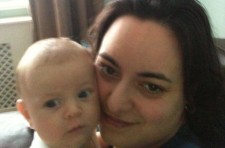
Adelina, 29, mum to Isabella, 15 weeks
Baby products you love
1. WhatsApp. This is an iPhone and Android app that allows you create group text chats for free. Our NCT group talks all the time and when things get tough I feel like I'm not alone.
2. FisherPrice play mat with keyboard at the end. Izzy has hours of fun on it and loves staring/talking to herself in the mirror. Plus it can change as she grows so it'll keep her interested.
3. Floppeze breastfeeding pillow. It goes everywhere with me as it makes feeding so much more comfortable and I can use it to sit Izzy up when she's older.
4. Cloth bath chair. You put it in the bath and sit baby in it. Having two hands to wash Izzy is so much easier.
5. ELC rainmaker: When Izzy screams during nappy changes this is a great distraction.
Baby products that didn't work for you
1. Babygros that don't do up at the front for obvious reasons!
2. Bright Starts car mirror. I just couldn't get it to sit at the right angle so that I could see Izzy while driving. The ToysRUs one does the job.
3. Buggies that only face one way. You'll be amazed how often you switch baby from parent to forward-facing. It's great to have the options.
4. Booties. Izzy grew out of them so quickly that they weren't really worth having.
5. Moses basket: Izzy hated it at first as the base was just too soft for her. We had to use cardboard to build a stronger base and then she loved it.
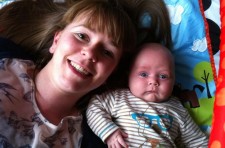
Hayley, 28, mum to Joshua, 18 weeks
Baby products you love
1. NCT/antenatal classes. Initially they seemed expensive but it was more than worth it just to make such a great circle of friends all going through the same things as you.
2. Dr Brown bottles. These are designed to help babies with wind and colic. It really helped Joshua and also my sanity!
3. Isofix car seat base. It's so quick and easy and puts my mind at rest when I hear the click.
4. Changing station. After having a Caesarean it was a lot easier to be able to stand and change Joshua, rather than crouching over and bending down.
5. Formula pots. You can pre-measure the right amount of powder before feed time which takes the pressure off remembering how much you've counted out in the small hours.
Baby products that didn't work for you
1. Huggies nappies. They always leaked for me, no matter how tight I did them.
2. Dentinox colic drops and gripe water. They didn't help Joshua at all, although some of my mum friends swear by them.
3. Shoes for babies. These are a real waste of time and money.
4. Buggy parasol. If you're taking your baby for a walk it constantly needs adjusting to keep the sun off.
5. Any clothes with back fastening. I had a couple of gorgeous outfits but they were so impractical Joshua never wore them.
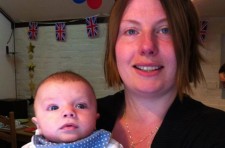
Kathryn, 30, mum to Isaac, 18 weeks
Baby products you love
1. Isofix car seat base. Like Hayley I had to mention this too because the click-in-and-out system is just so easy.
2. Lansinoh nipple cream. Soothes sore and cracked nipples - essential when you start breastfeeding.
3. Angelcare movement monitor. This goes in the baby's cot and was extra peace of mind when Isaac went into his own room.
4. Cold water steriliser unit. No need to rely on a microwave or mains electricity. Great for holidays.
5. Reusable nappies. Not as scary as you might imagine. Isaac gets on really well with them and I'm saving money.
Baby products that didn't work for you
1. Baby bath. It takes up a lot of space when you're trying to store it and a baby seat in a normal bath works just as well.
2. Baby scissors. I've found that gently chewing Isaac's nails is safer than brandishing sharp objects near him.
3. Electric bottle steriliser. Once they're open, bottles are on borrowed time as germs start to get in.
4. Changing bag without a zip. Pockets and zips are essential for keeping everything safe and locked away when you're out and about.
5. Swaddle pod. While it's easy to use, it doesn't hug your baby really tight. Also they're quite expensive for what they are.
GoodtoKnow Newsletter
Parenting advice, hot topics, best buys and family finance tips delivered straight to your inbox.

Heidi is a seasoned parenting journalist with over 15 years of experience. She has contributed to numerous UK national newspapers, including The Guardian, The Times, and The Telegraph. Her work has also appeared in a variety of print and digital magazines, such as Psychologies and Mother & Baby, where she was Shopping Editor for six years. In this role, she specialised in consumer features, including buying guides and baby gear reviews. Heidi is also a mum of three.
-
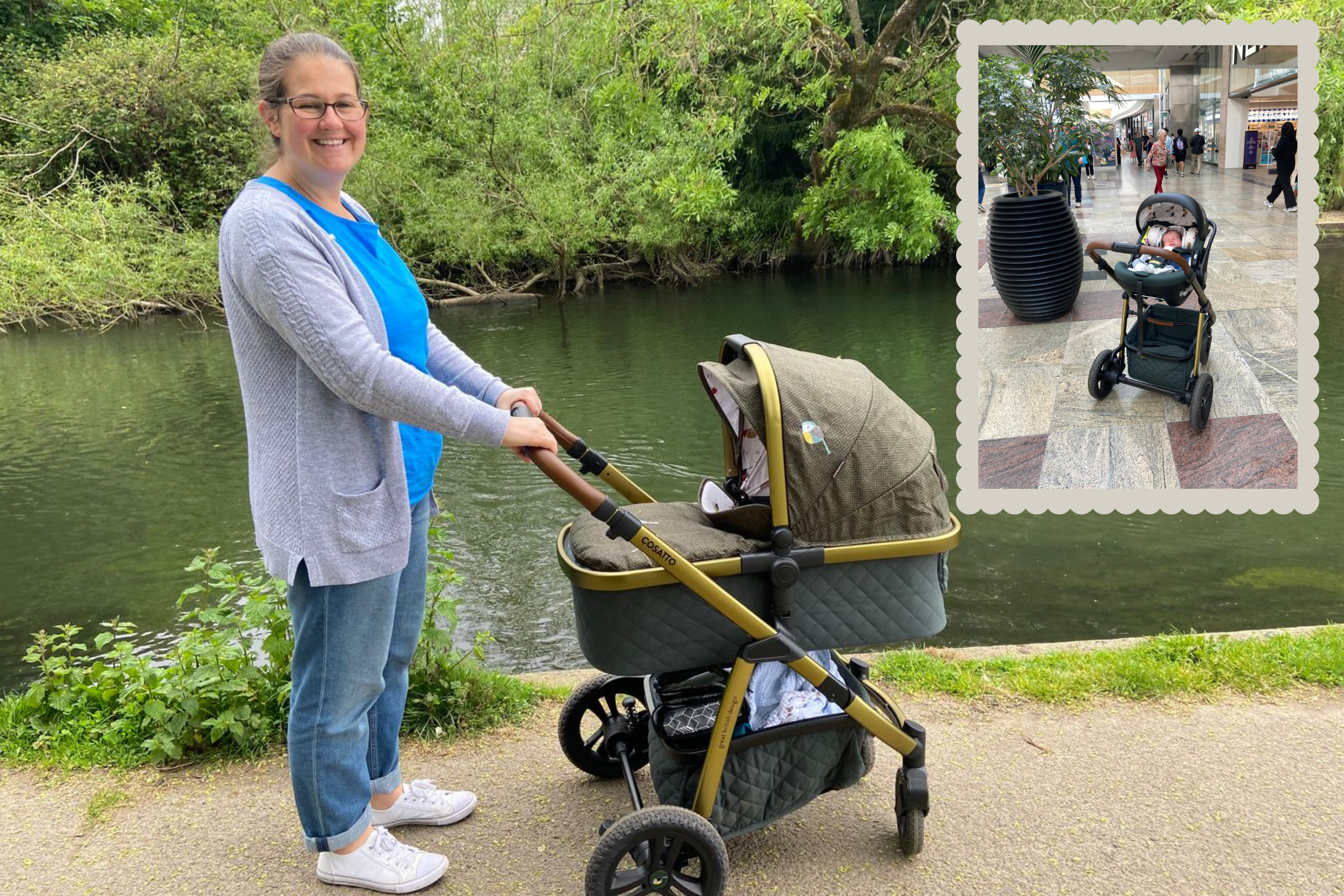 Cosatto Wow 3 hands-on review: practical, beautiful and comfortable - wow!
Cosatto Wow 3 hands-on review: practical, beautiful and comfortable - wow!A versatile travel system with a newborn carrycot, upright pushchair seat and a compatible car seat - everything you need in one stylish package
By Heidi Scrimgeour Published
-
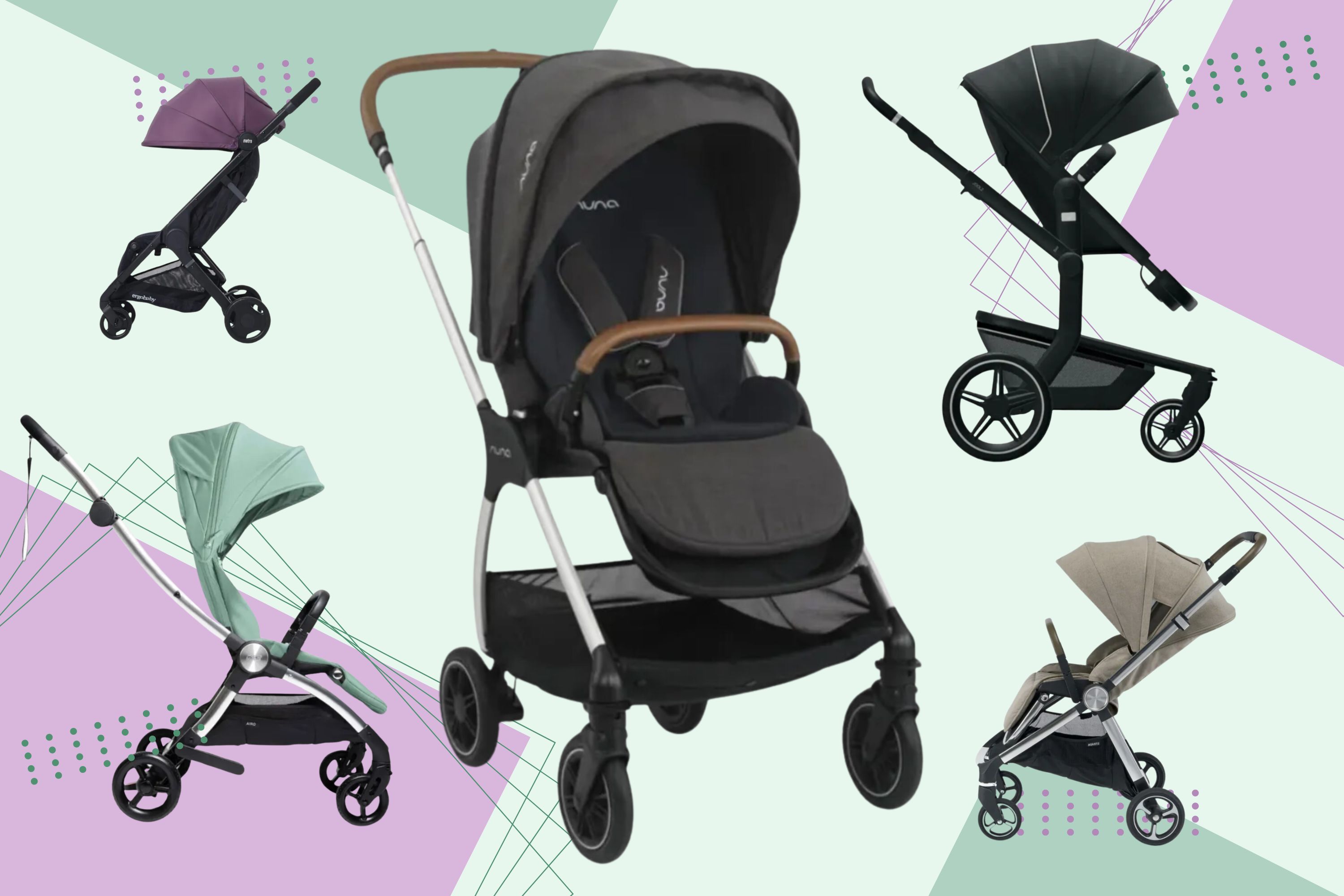 14 of the best pushchairs to buy in 2024: buggies and strollers for growing toddlers reviewed
14 of the best pushchairs to buy in 2024: buggies and strollers for growing toddlers reviewedWe asked a panel of parents to put the latest pushchairs to the test - here's what they thought
By Heidi Scrimgeour Published
-
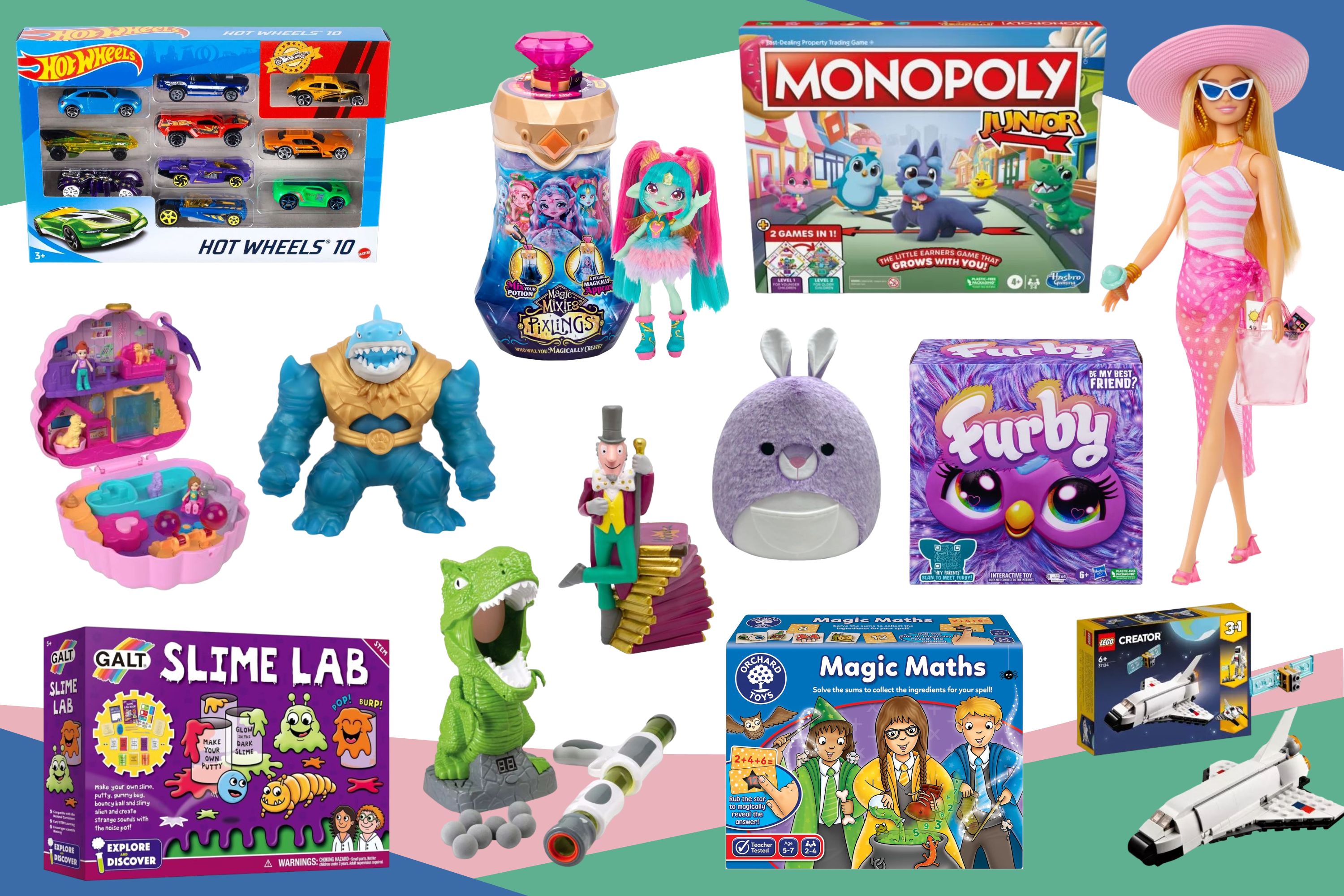 Best toys for 6 year olds 2025: 45 age-appropriate gift ideas from just £6.99
Best toys for 6 year olds 2025: 45 age-appropriate gift ideas from just £6.99From Barbie to slime, and from educational to creative, these top toys for six-year-olds are sure to be a big hit
By Sarah Handley Published
-
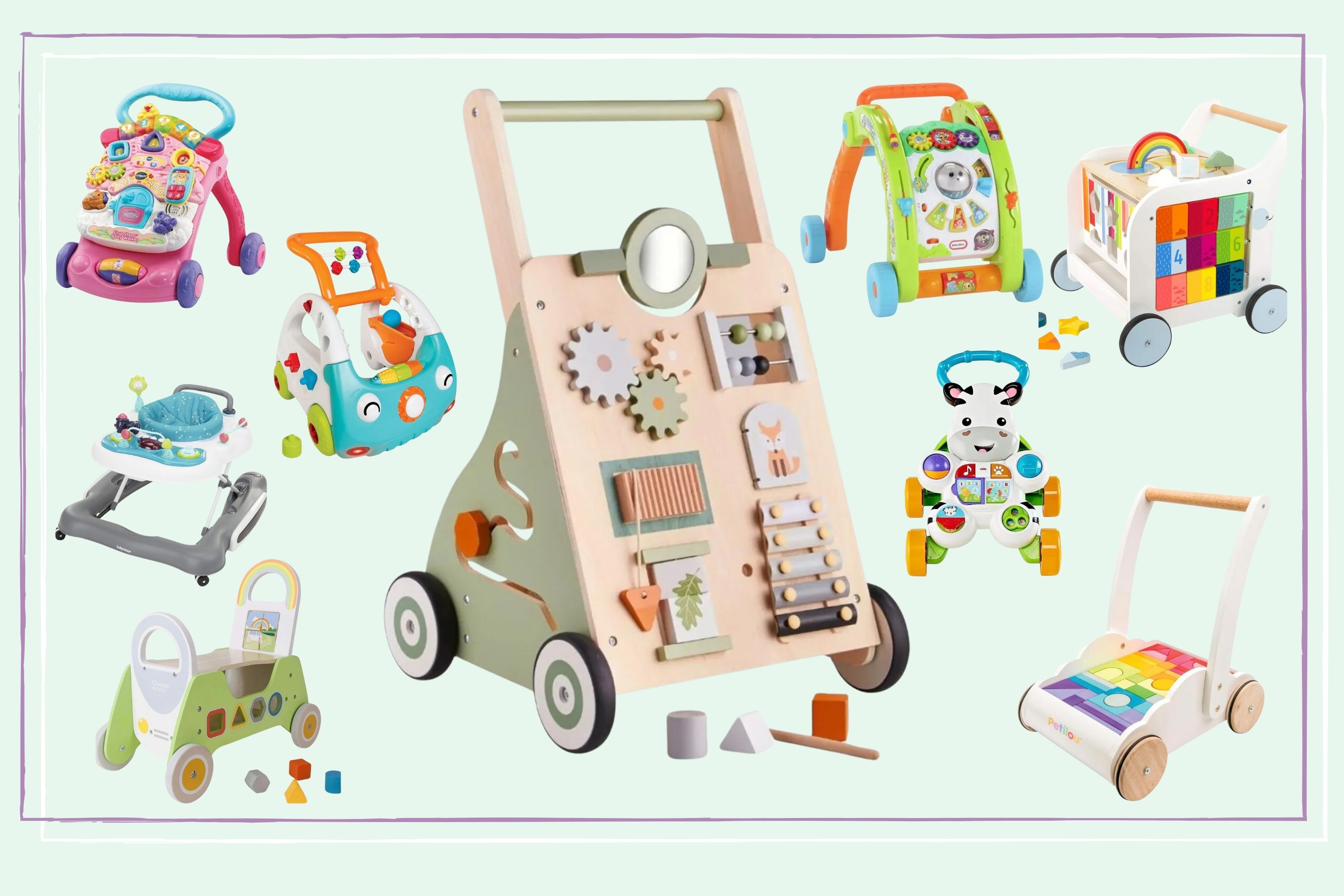 The best baby walkers to buy in 2025: 9 top tried and tested push toys for girls and boys
The best baby walkers to buy in 2025: 9 top tried and tested push toys for girls and boysThe best baby walkers are sturdy and stable — here are the top-rated options that made the cut according to parent testers
By Heidi Scrimgeour Published
-
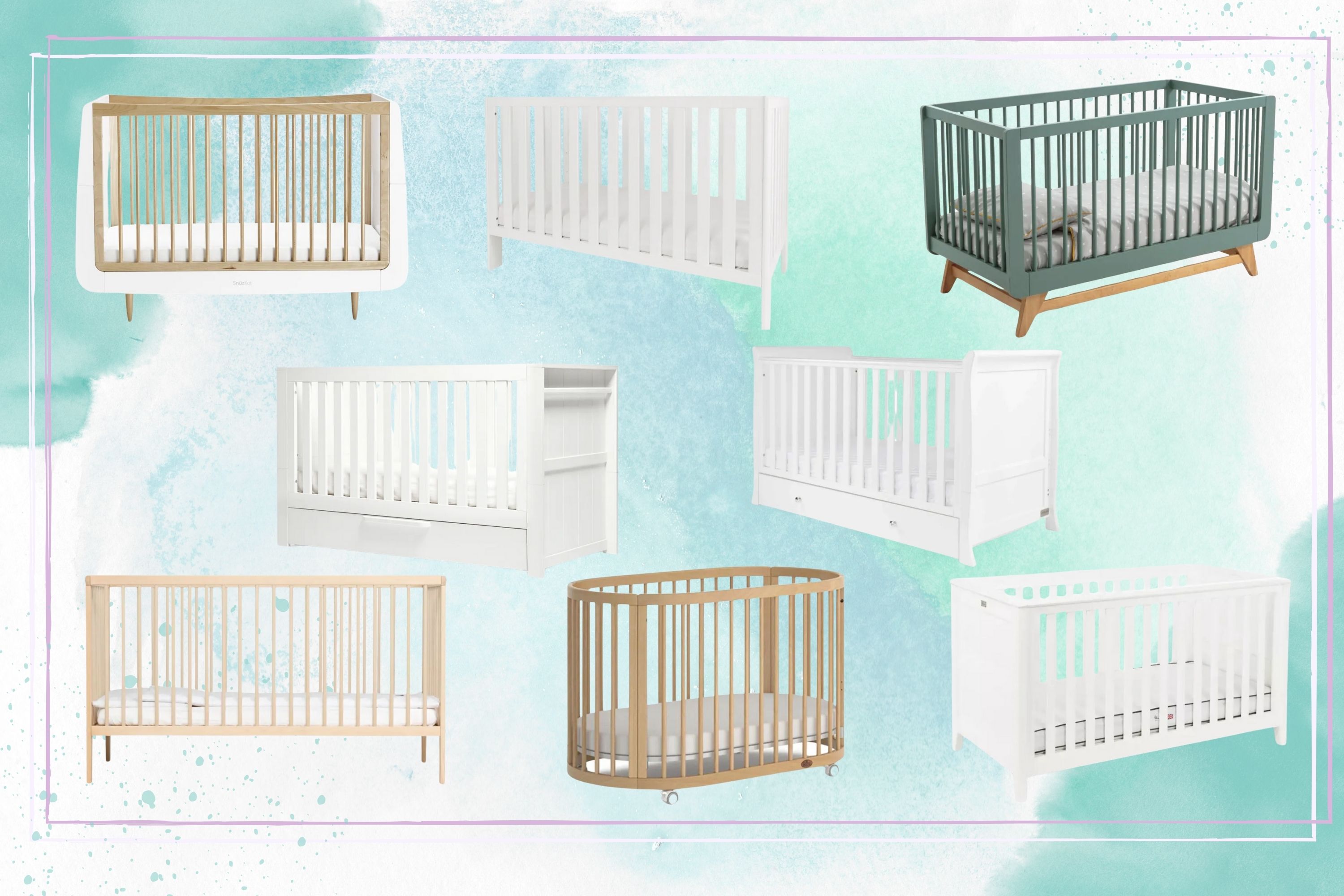 Best cot beds in 2024: 12 sleep solutions, all tried and tested by babies and toddlers
Best cot beds in 2024: 12 sleep solutions, all tried and tested by babies and toddlersDiscover the best cot bed for your baby based on our tried-and-tested parent reviews
By Heidi Scrimgeour Published
-
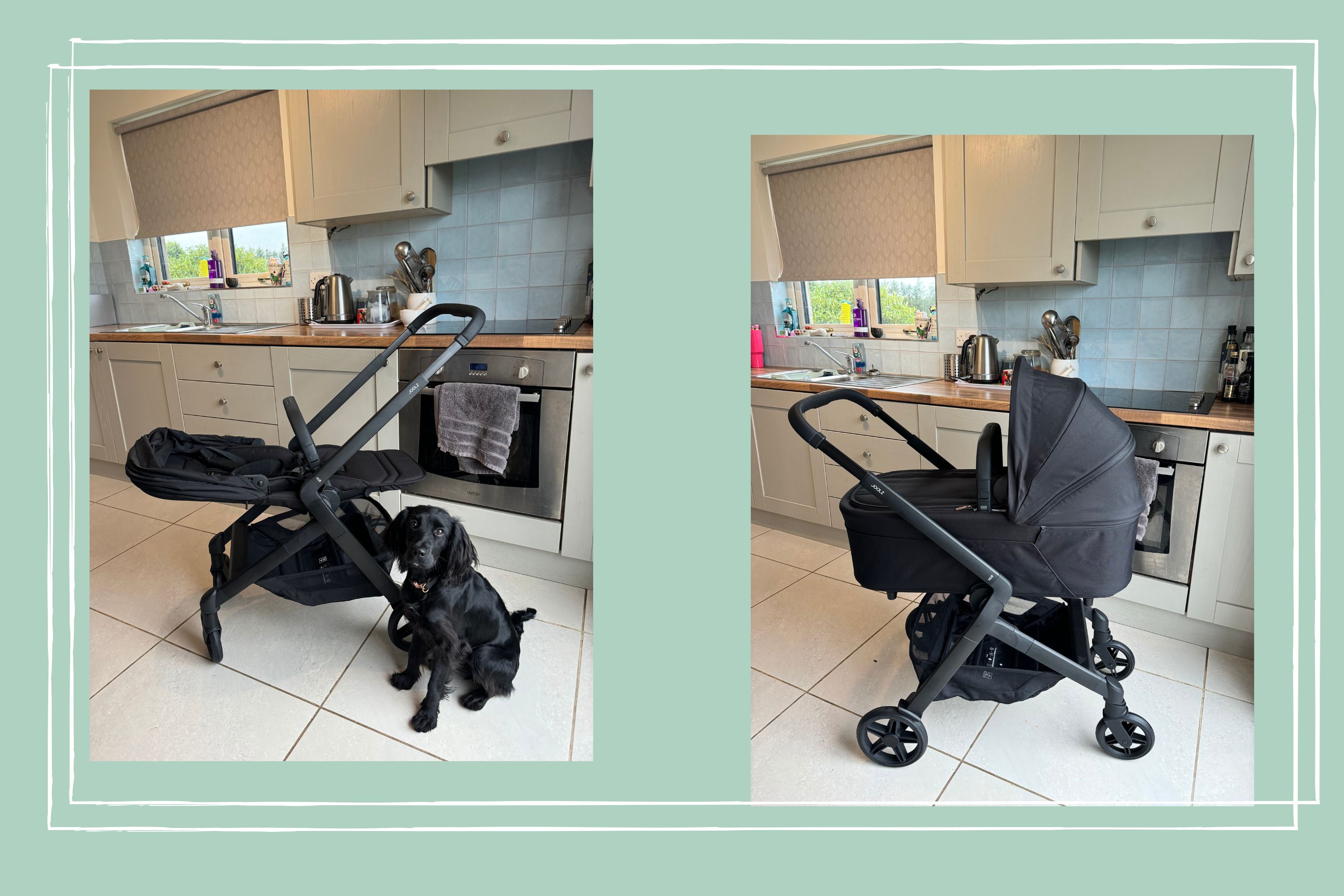 First Look: the new Joolz Hub² is the urban stroller I wish I had when my lads were little
First Look: the new Joolz Hub² is the urban stroller I wish I had when my lads were littleJoolz, the premium pushchair brand, launches its latest masterpiece today - and we got an exclusive early first look
By Heidi Scrimgeour Published
-
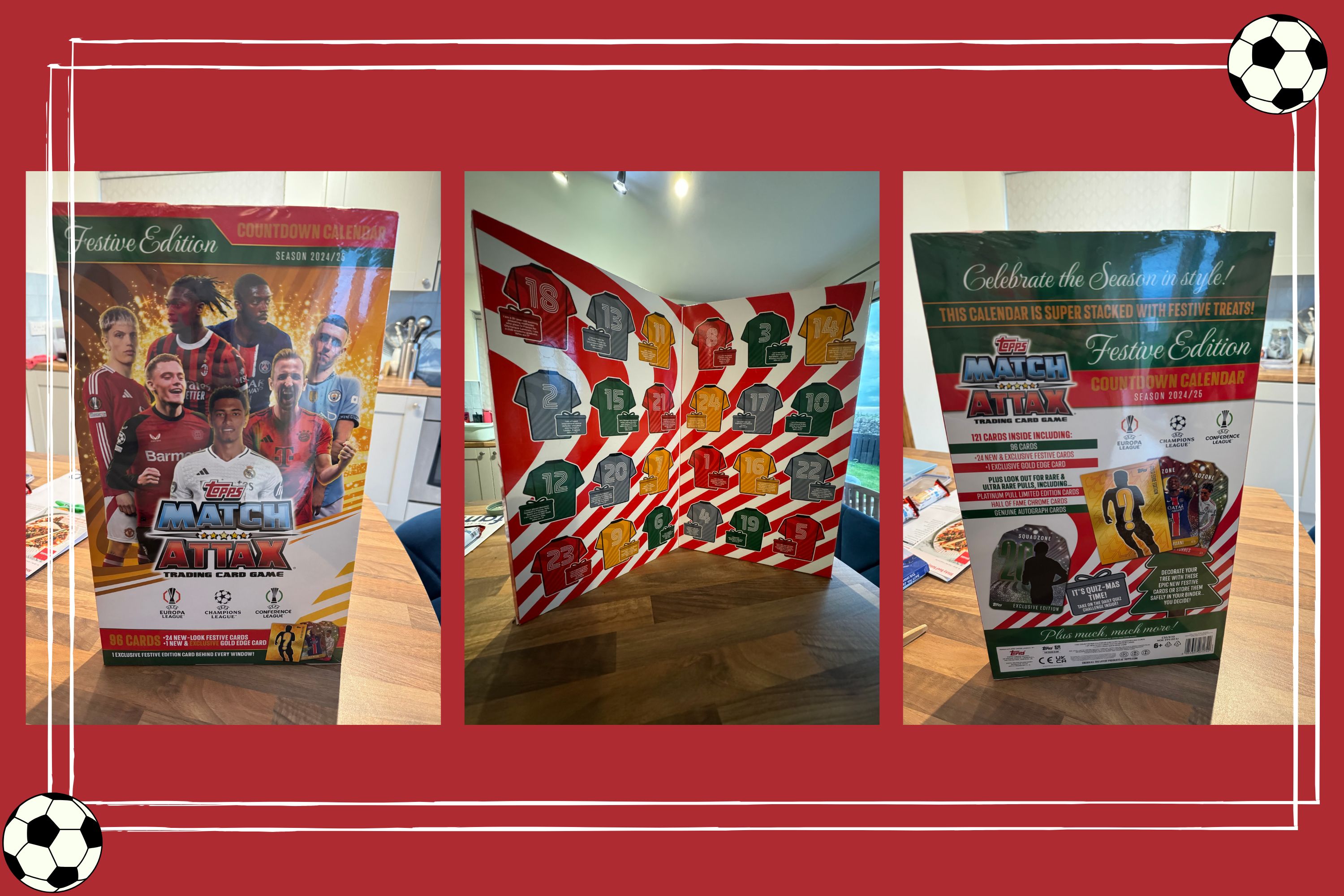 First Look: Match Attax Advent Calendar
First Look: Match Attax Advent CalendarWe recently got our hands on this year's festive must-have for footie fans. It's safe to say our 11-year-old tester (and a total baller) was absolutely thrilled.
By Heidi Scrimgeour Published
-
 Shimmerverse Pixlings Pegacorn review: this toy might involve a mystery reveal, but it's the doll and her pet that are the real magic
Shimmerverse Pixlings Pegacorn review: this toy might involve a mystery reveal, but it's the doll and her pet that are the real magicFind out how this new Magic Mixies toy faired when tested by our parent tester Punteha and her eight-year-old daughter
By Sarah Handley Published